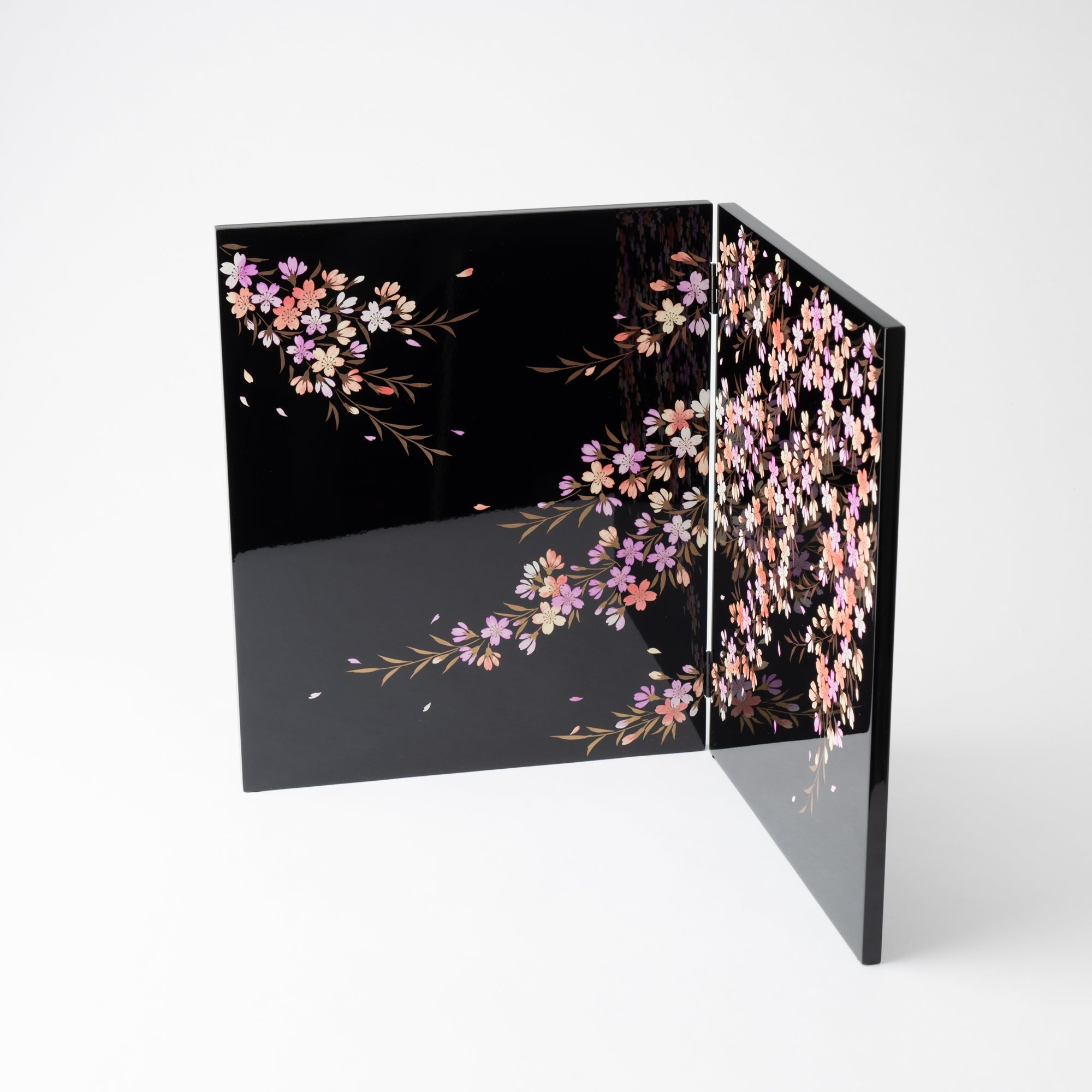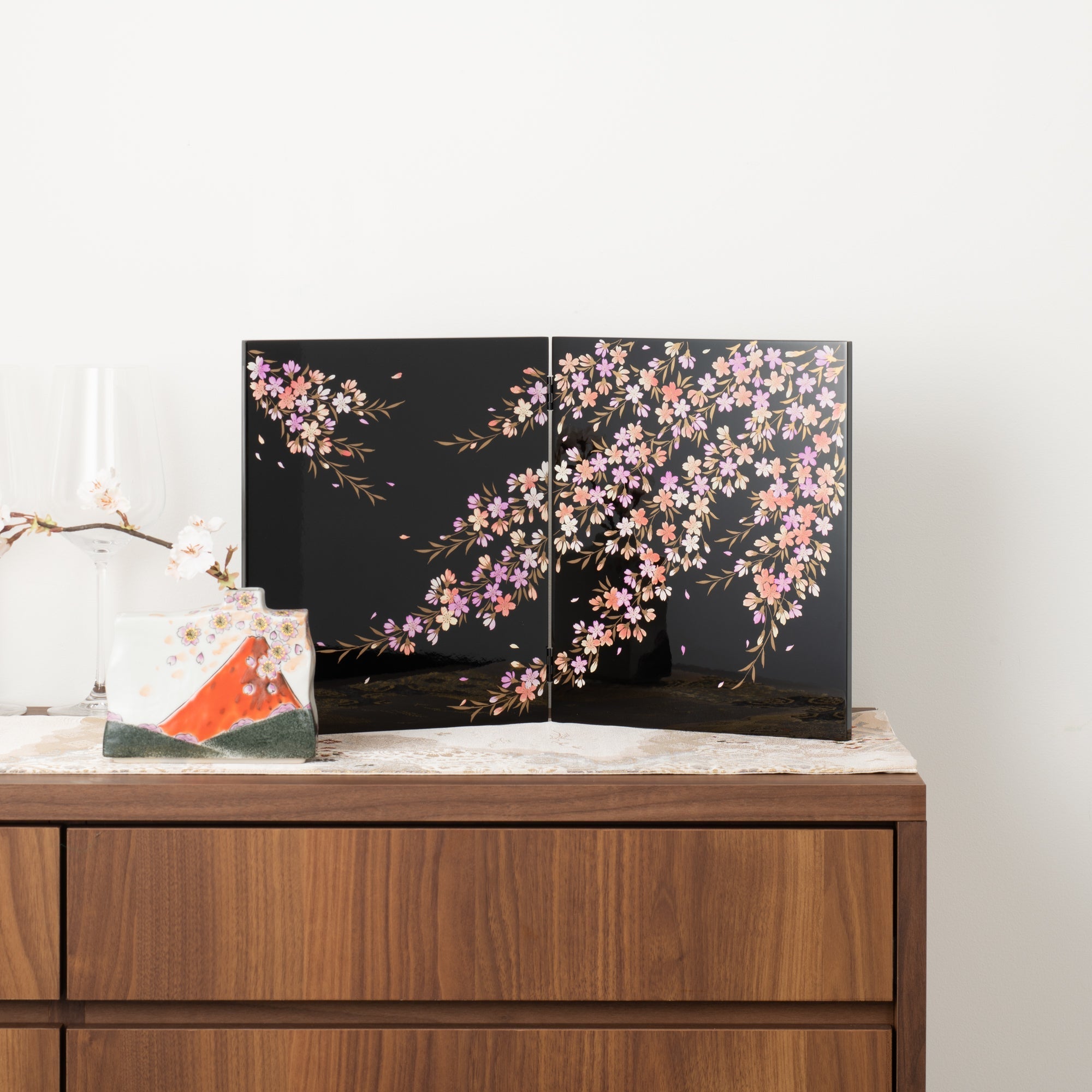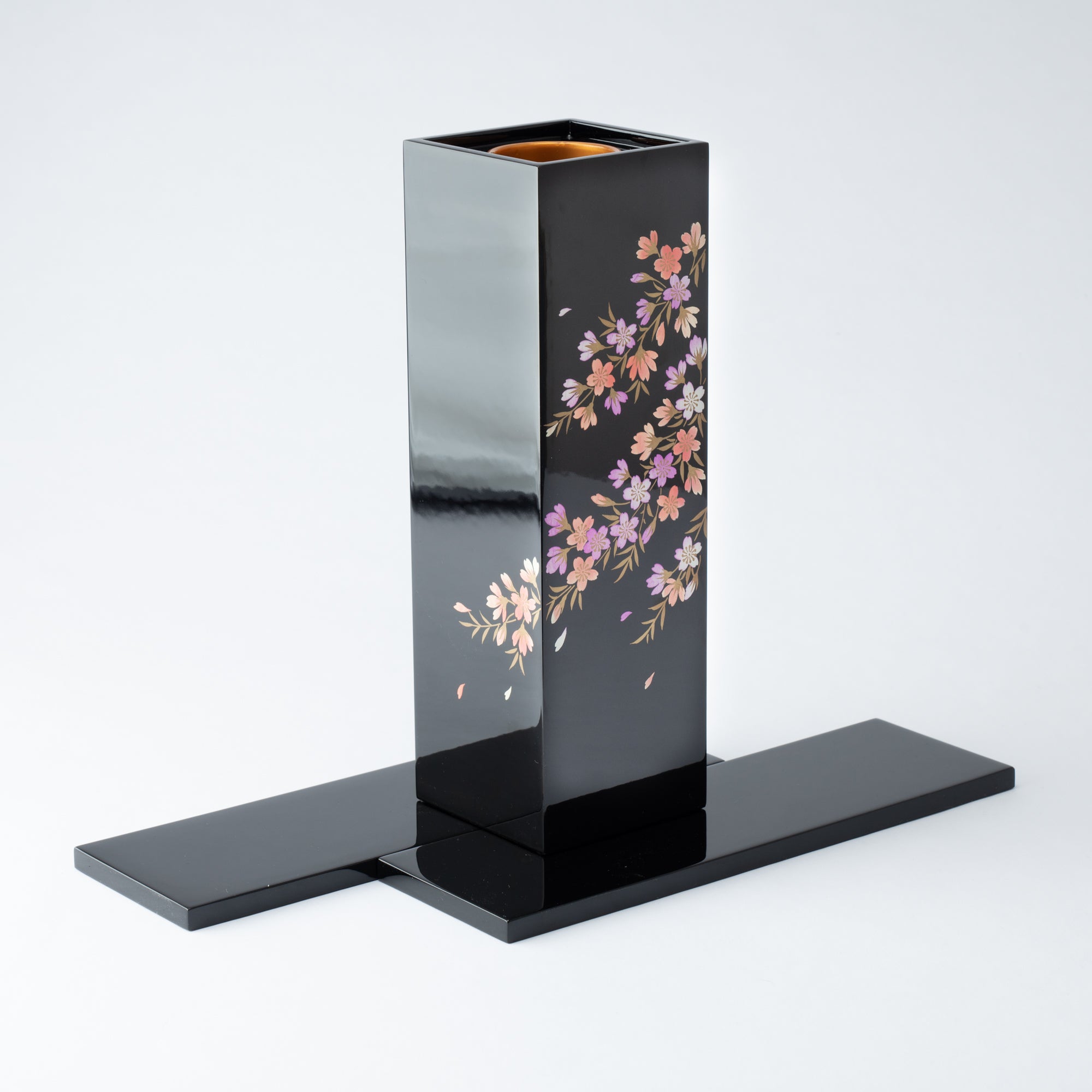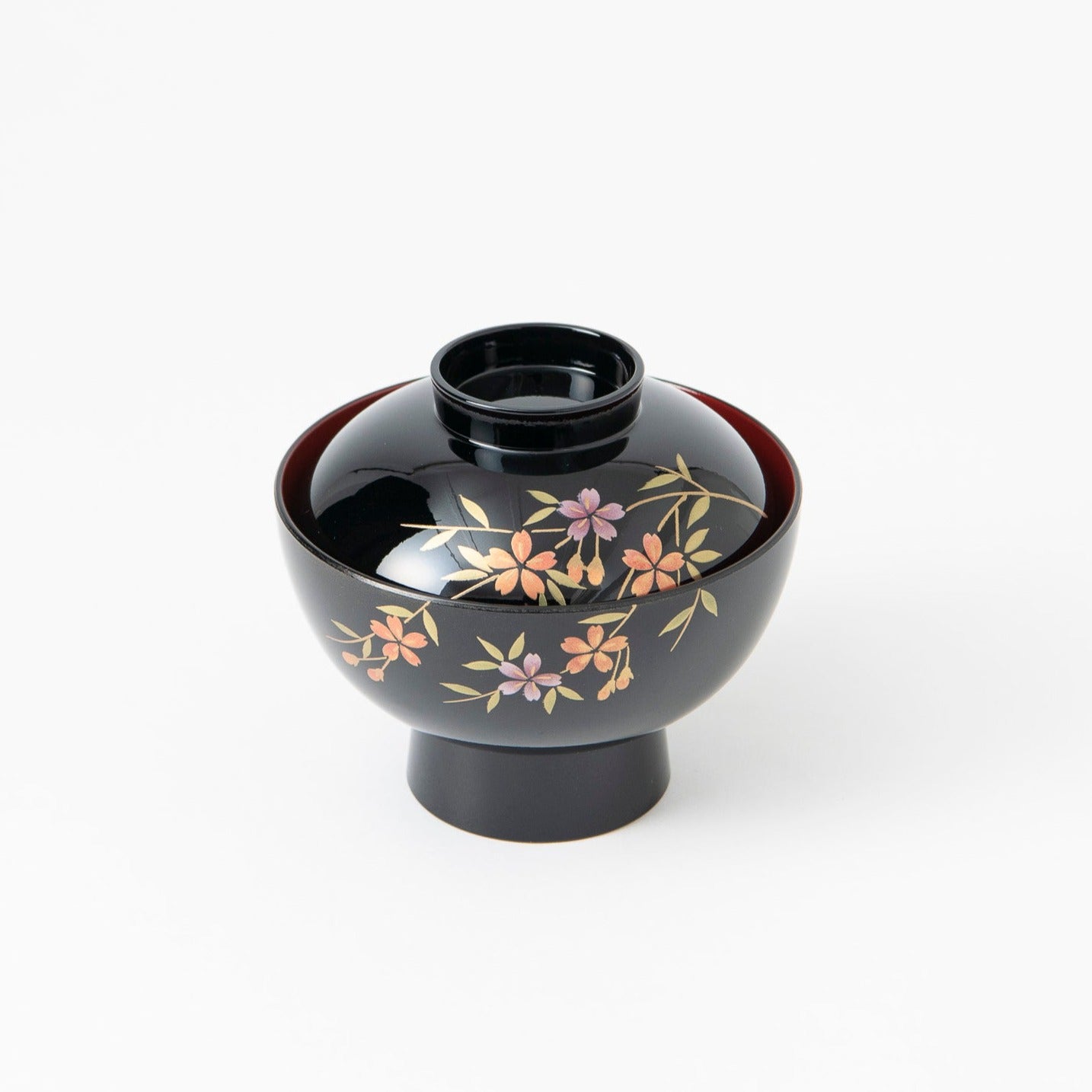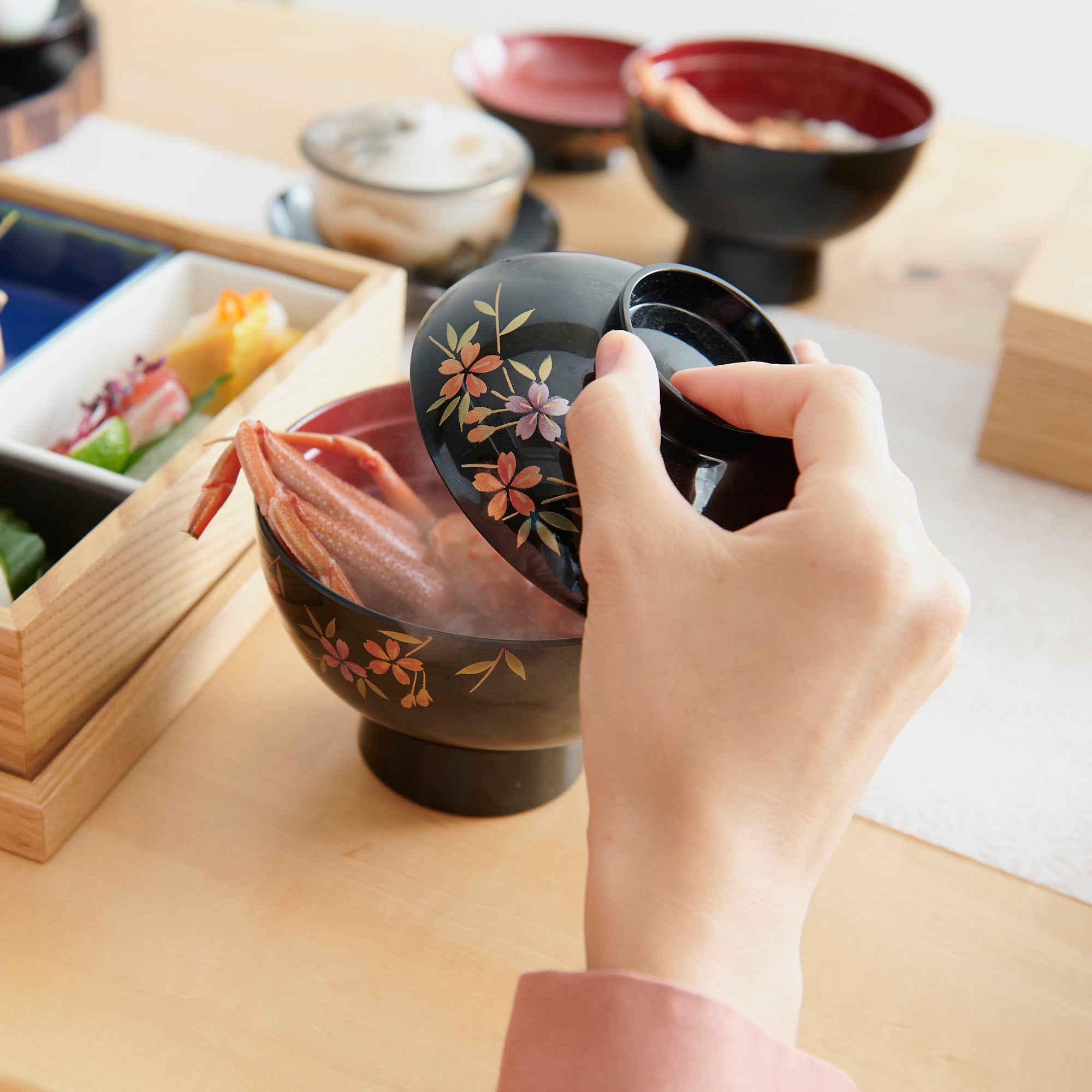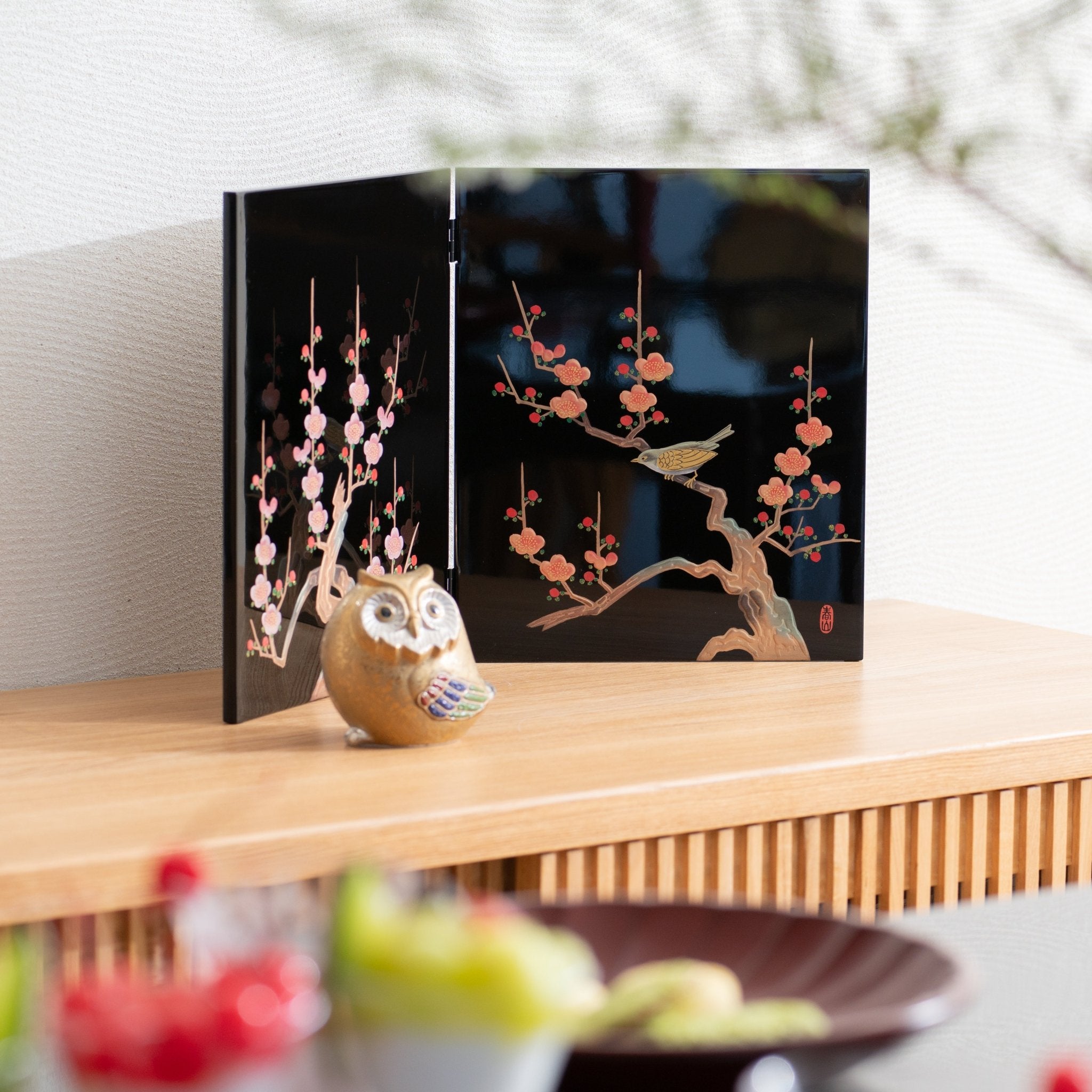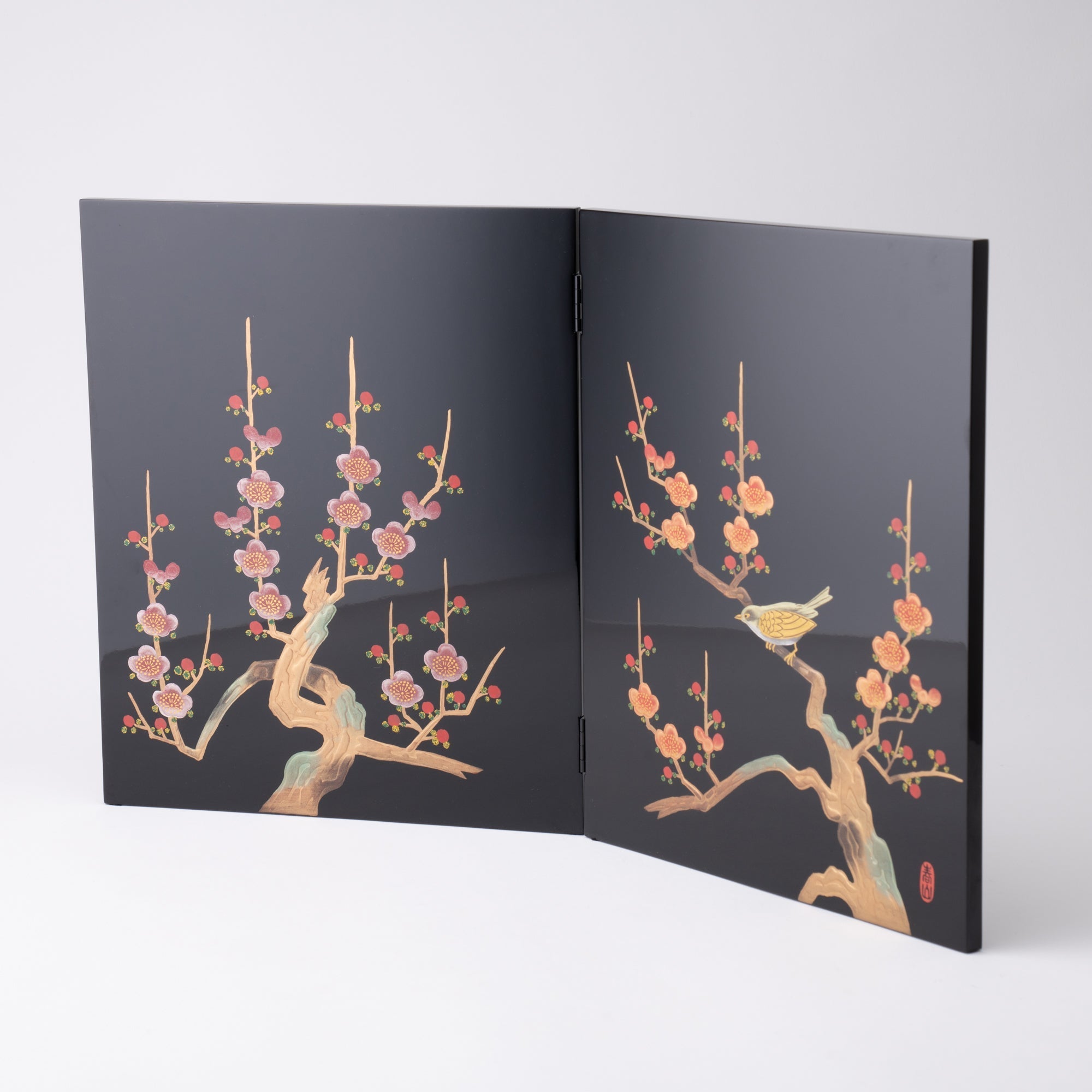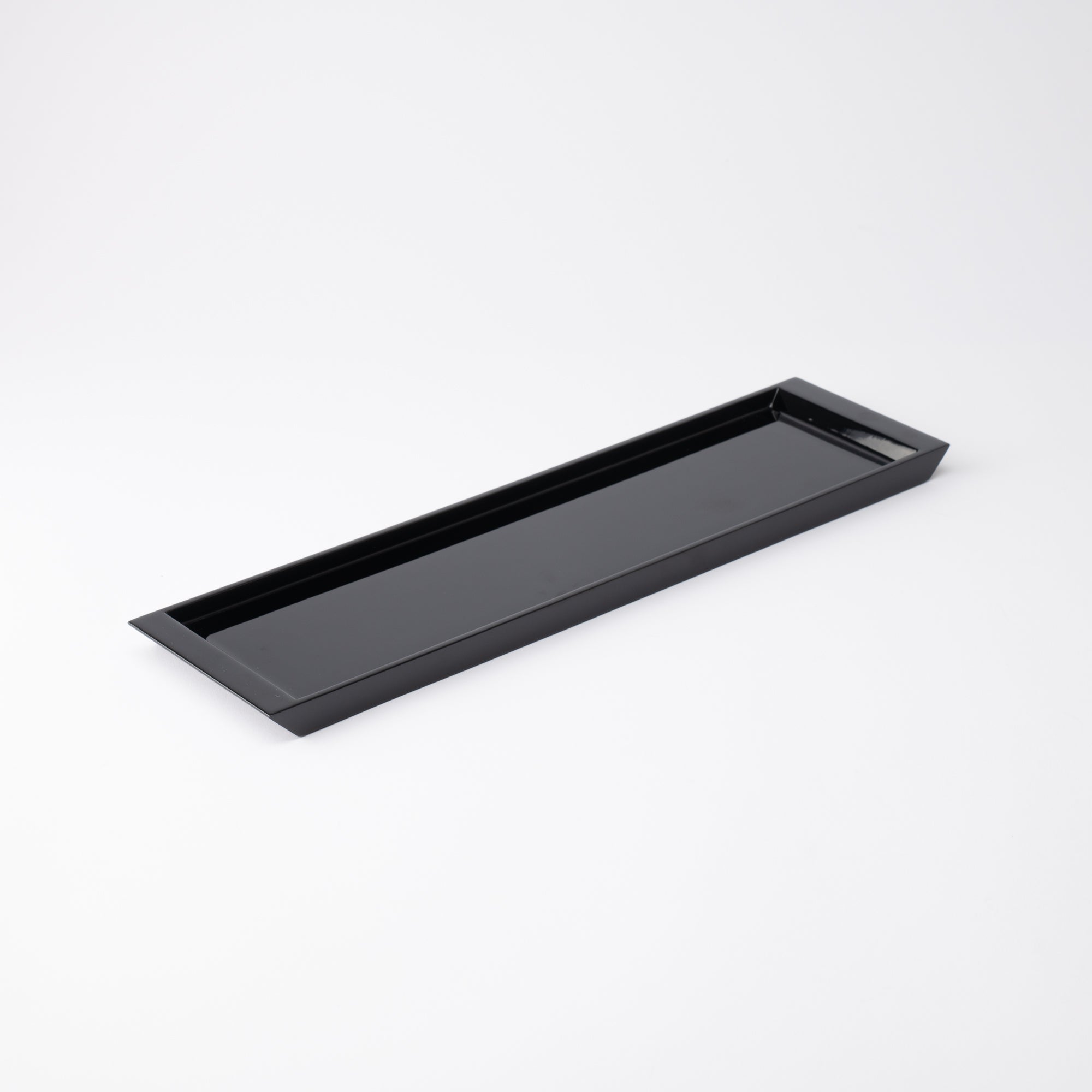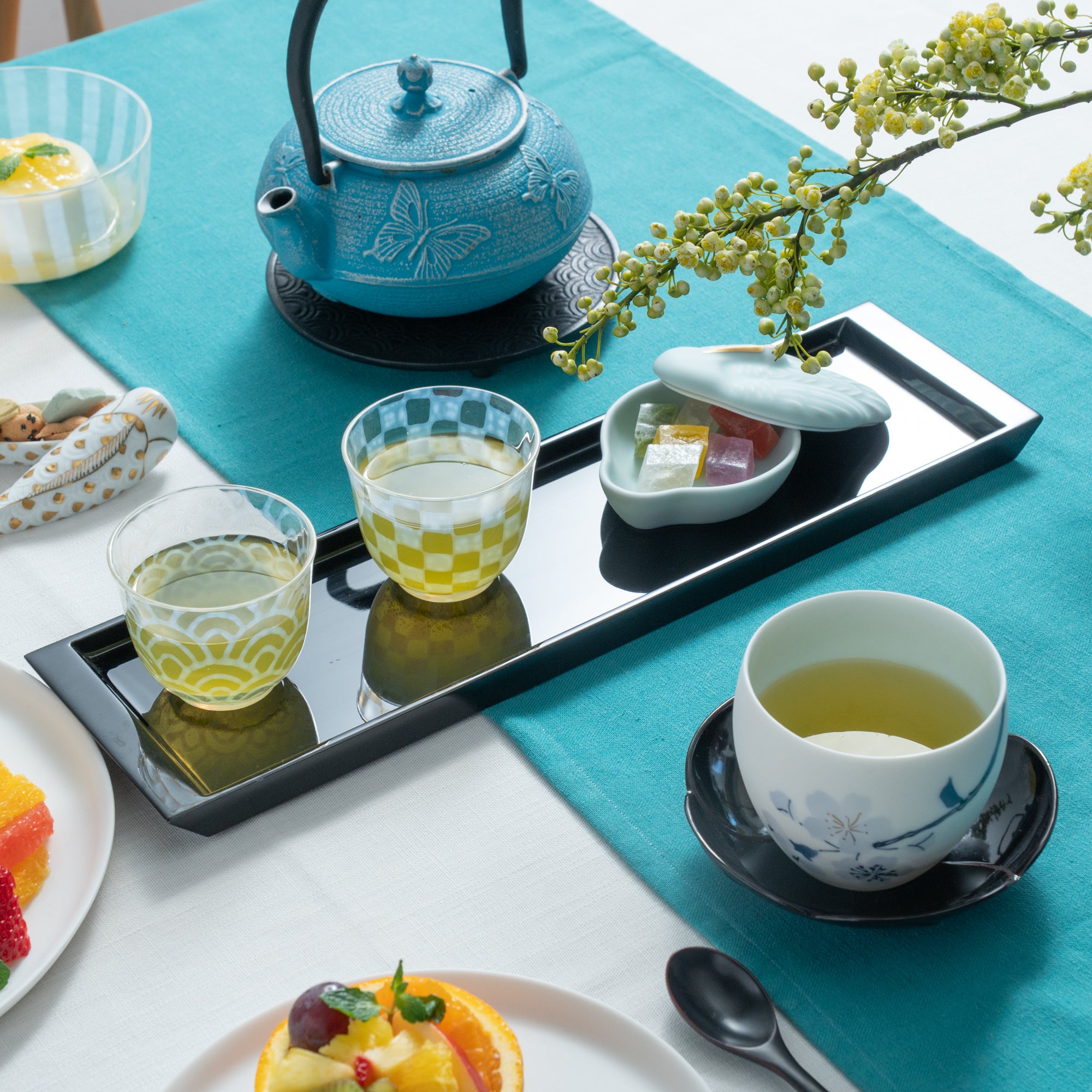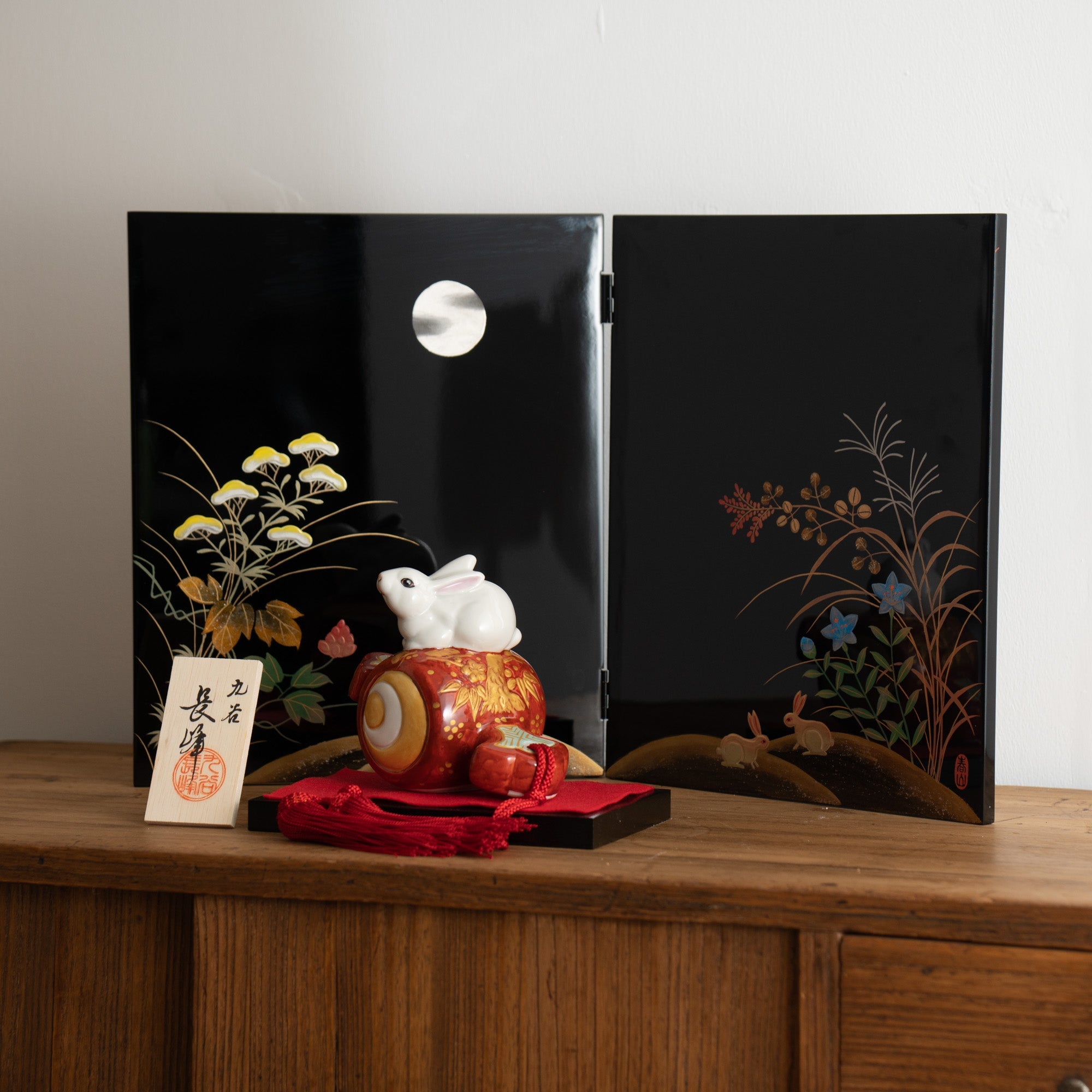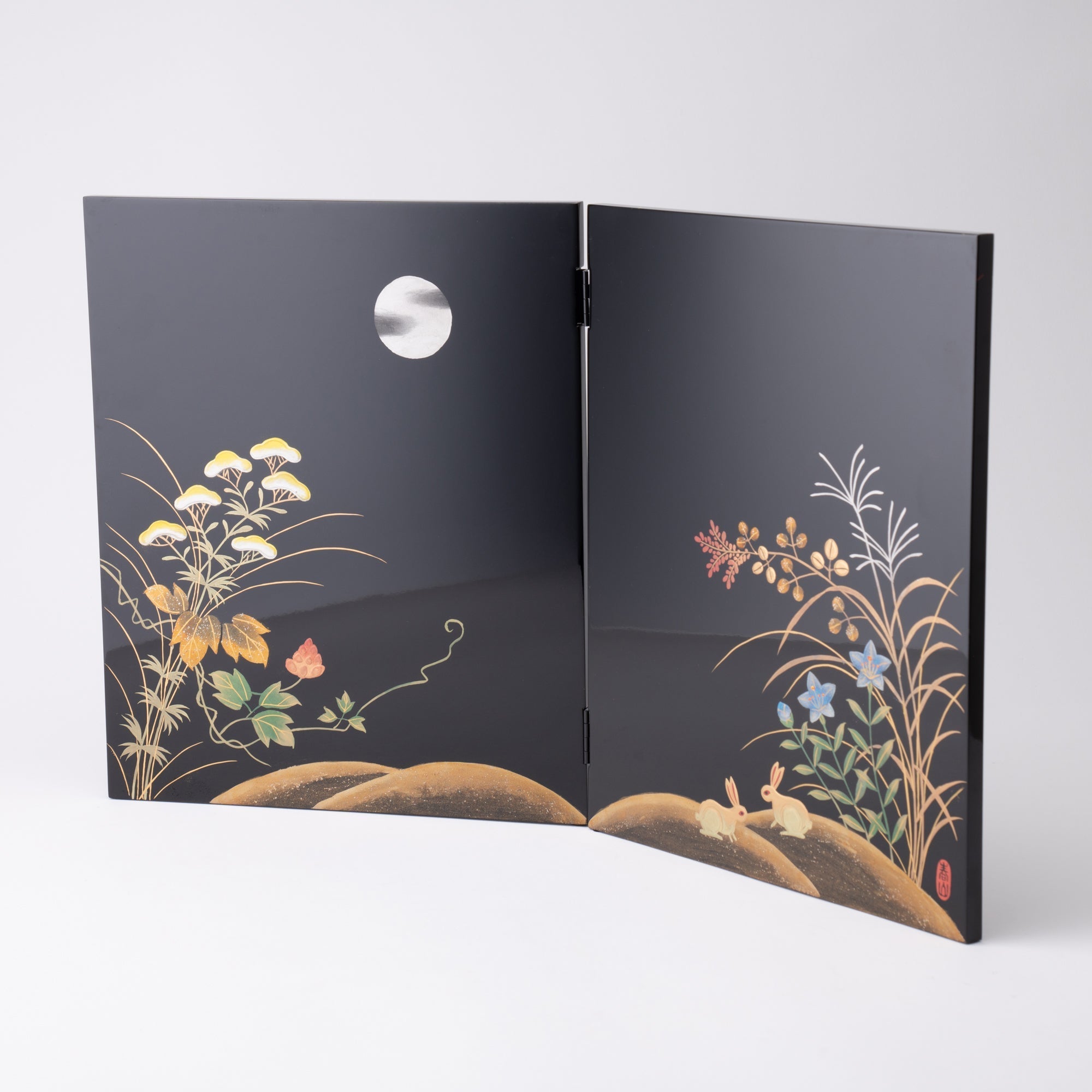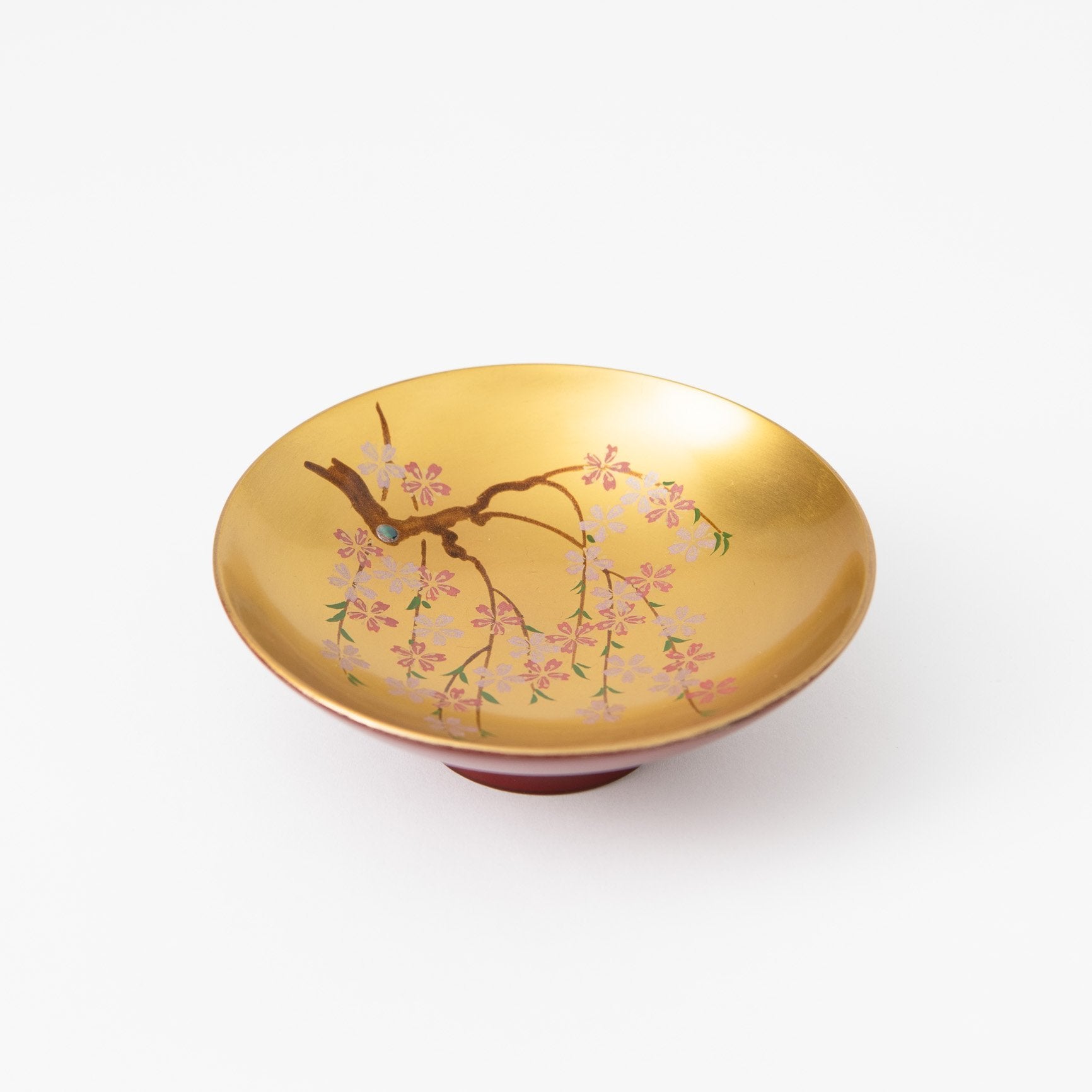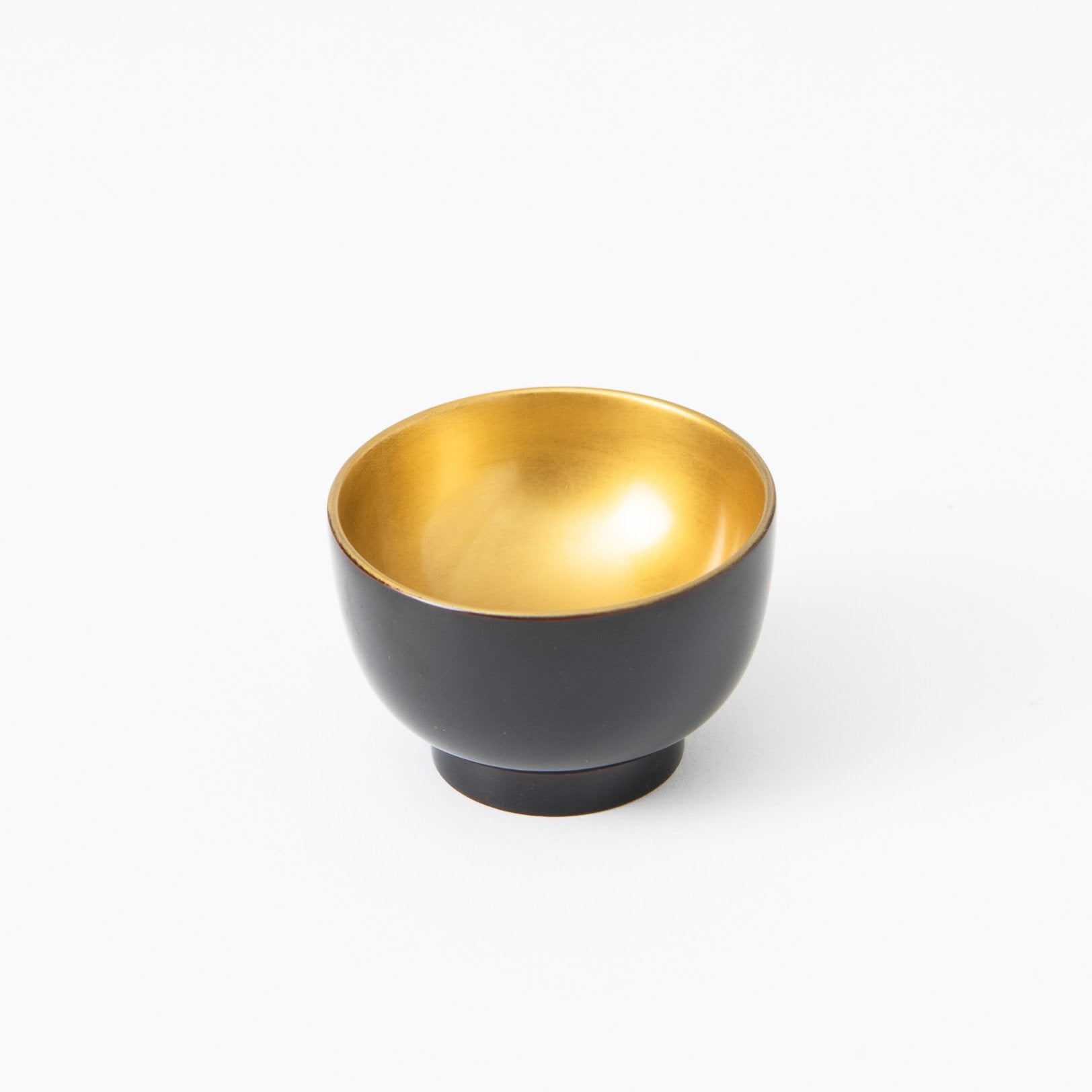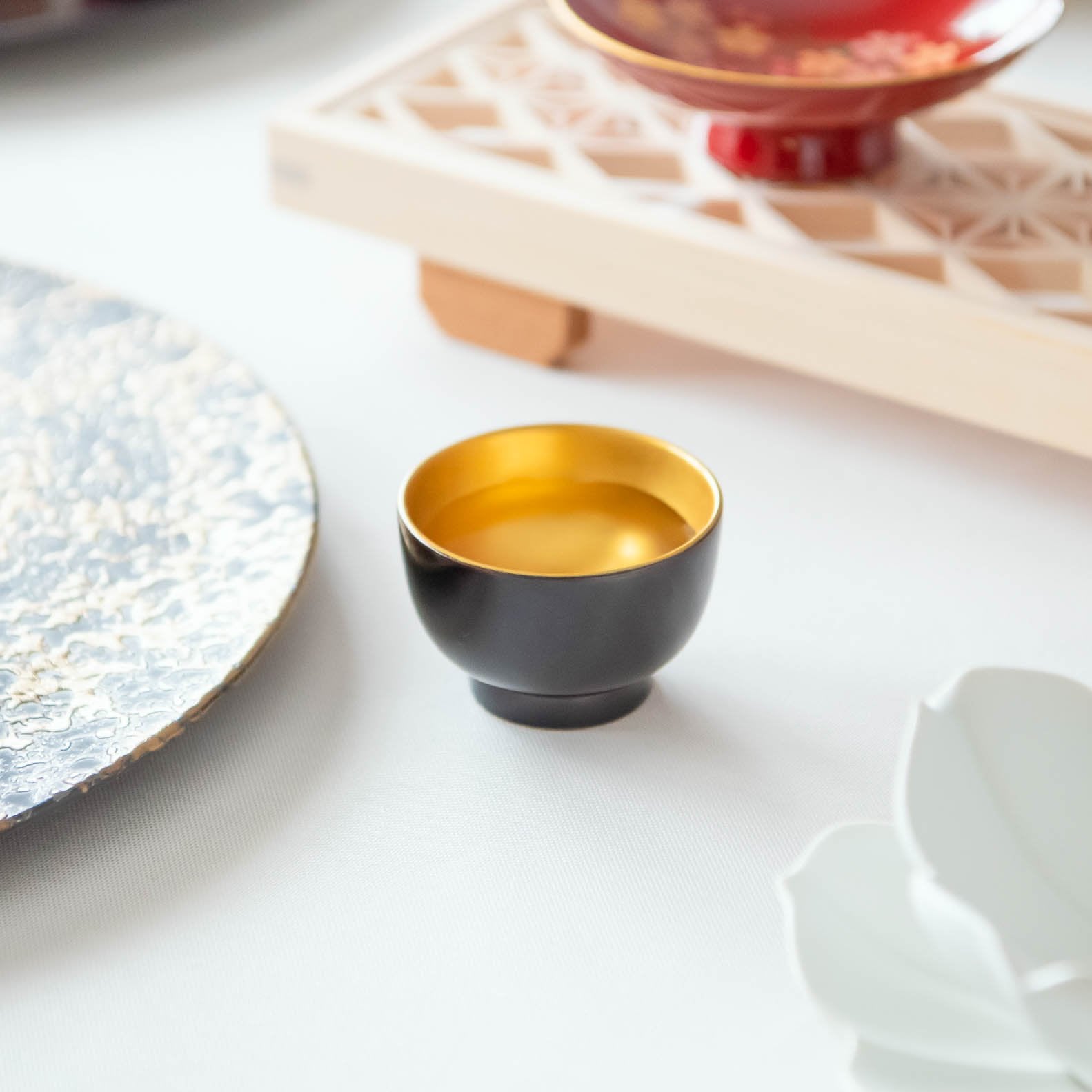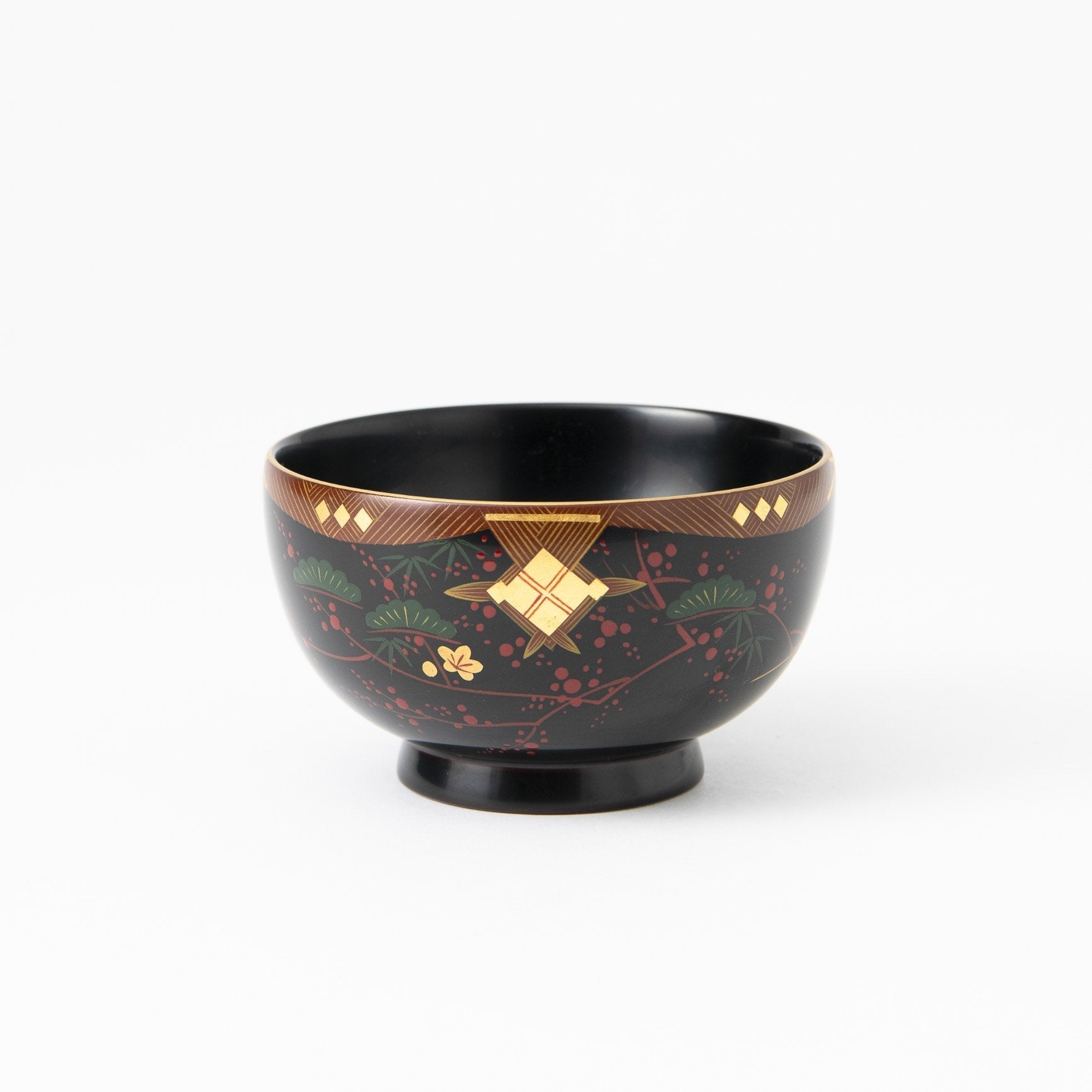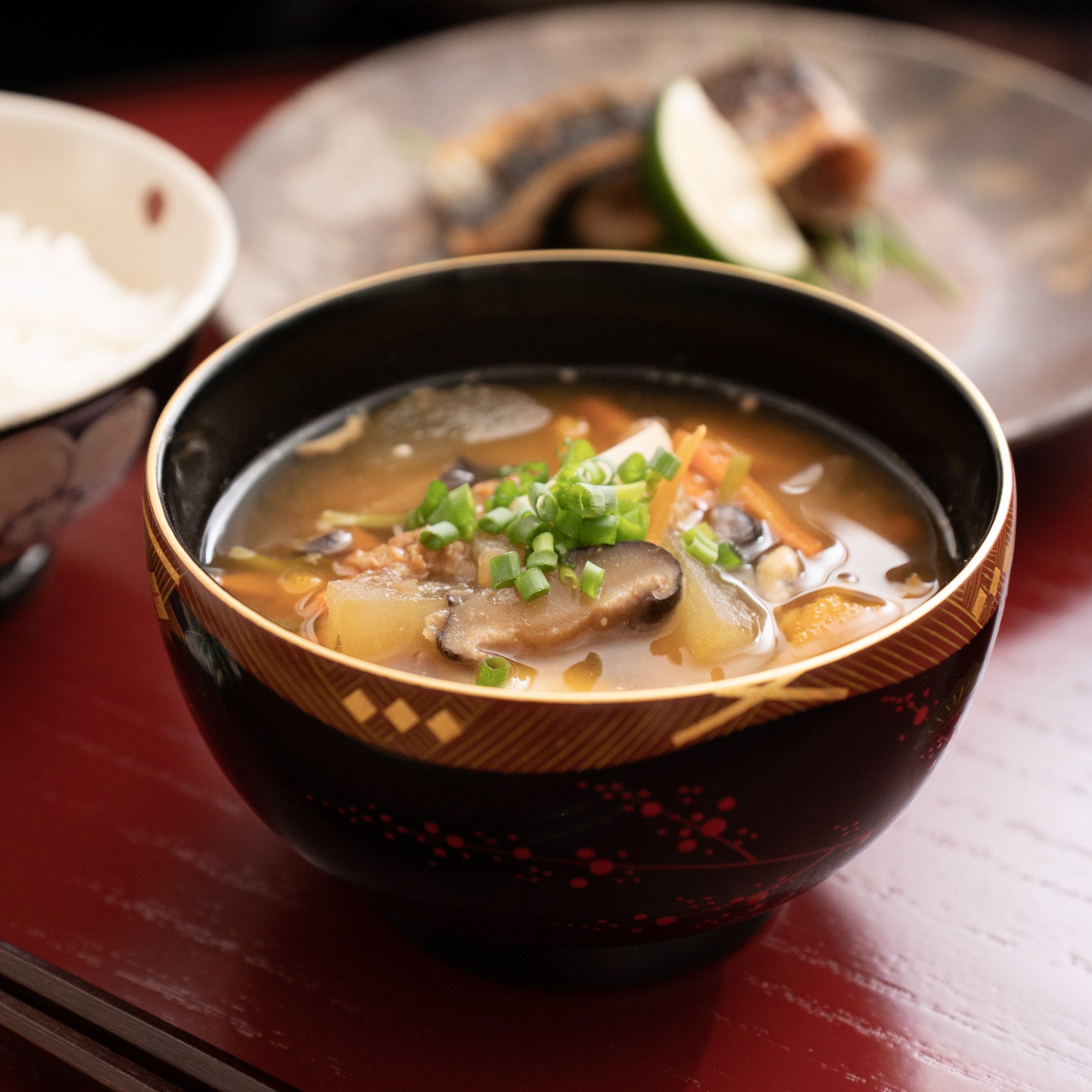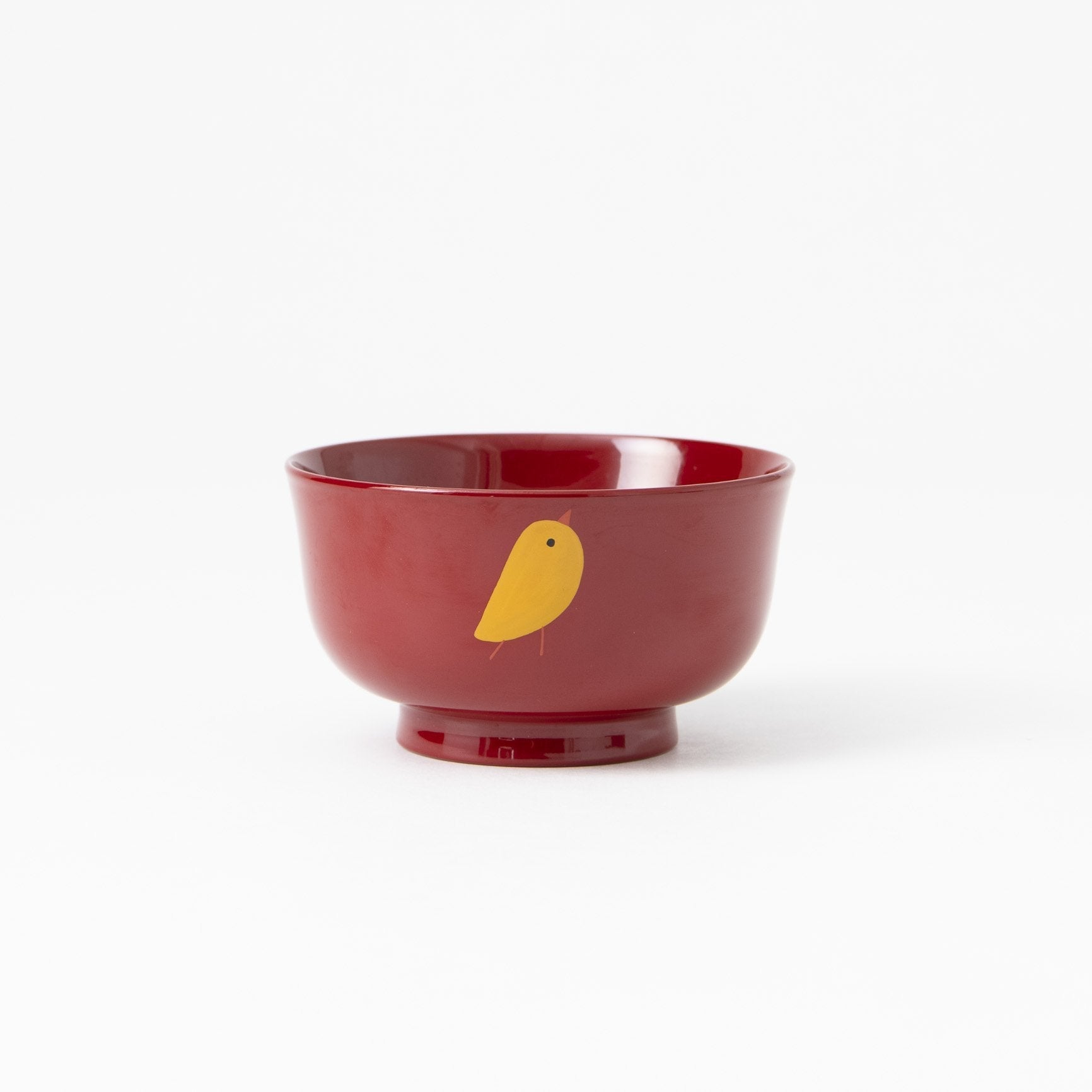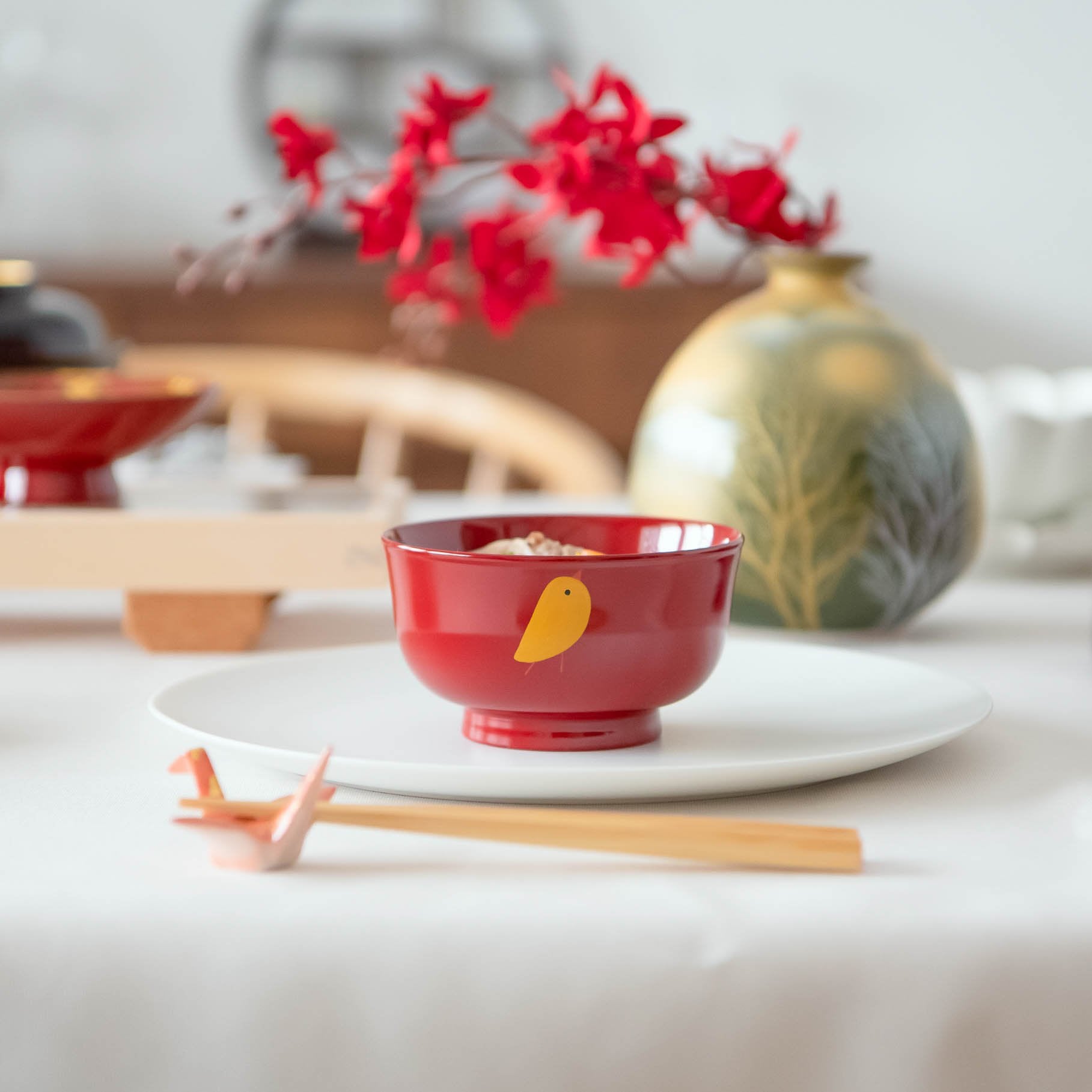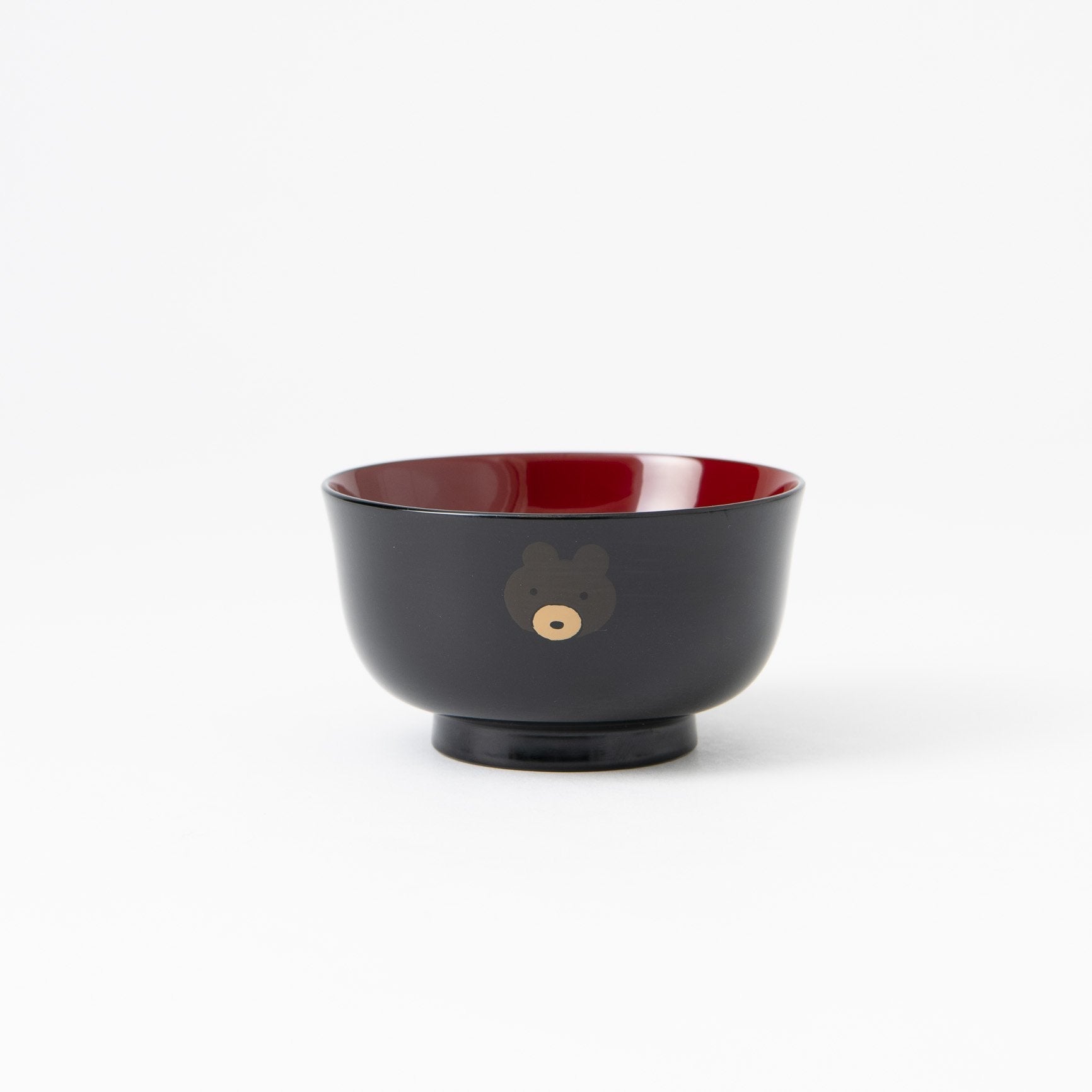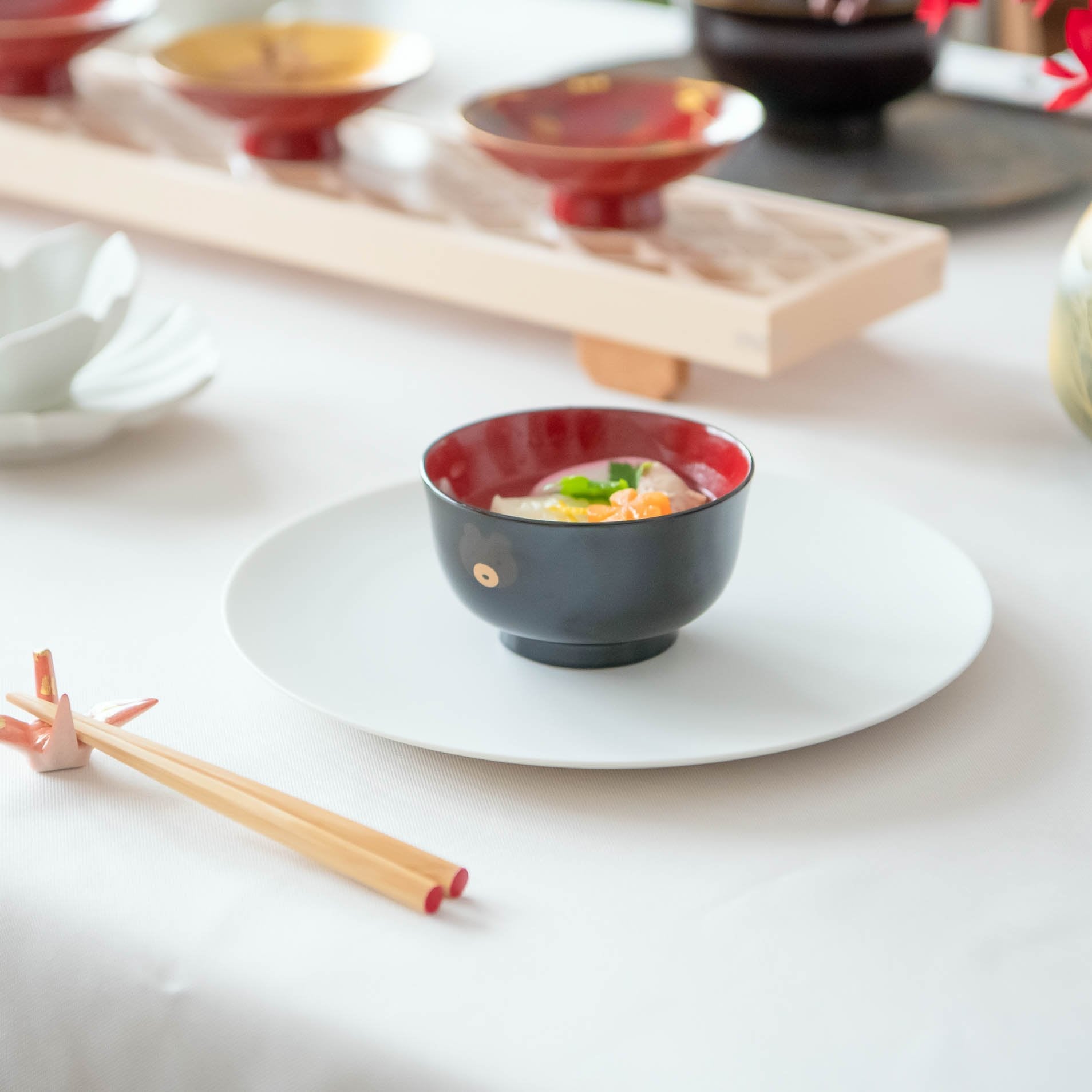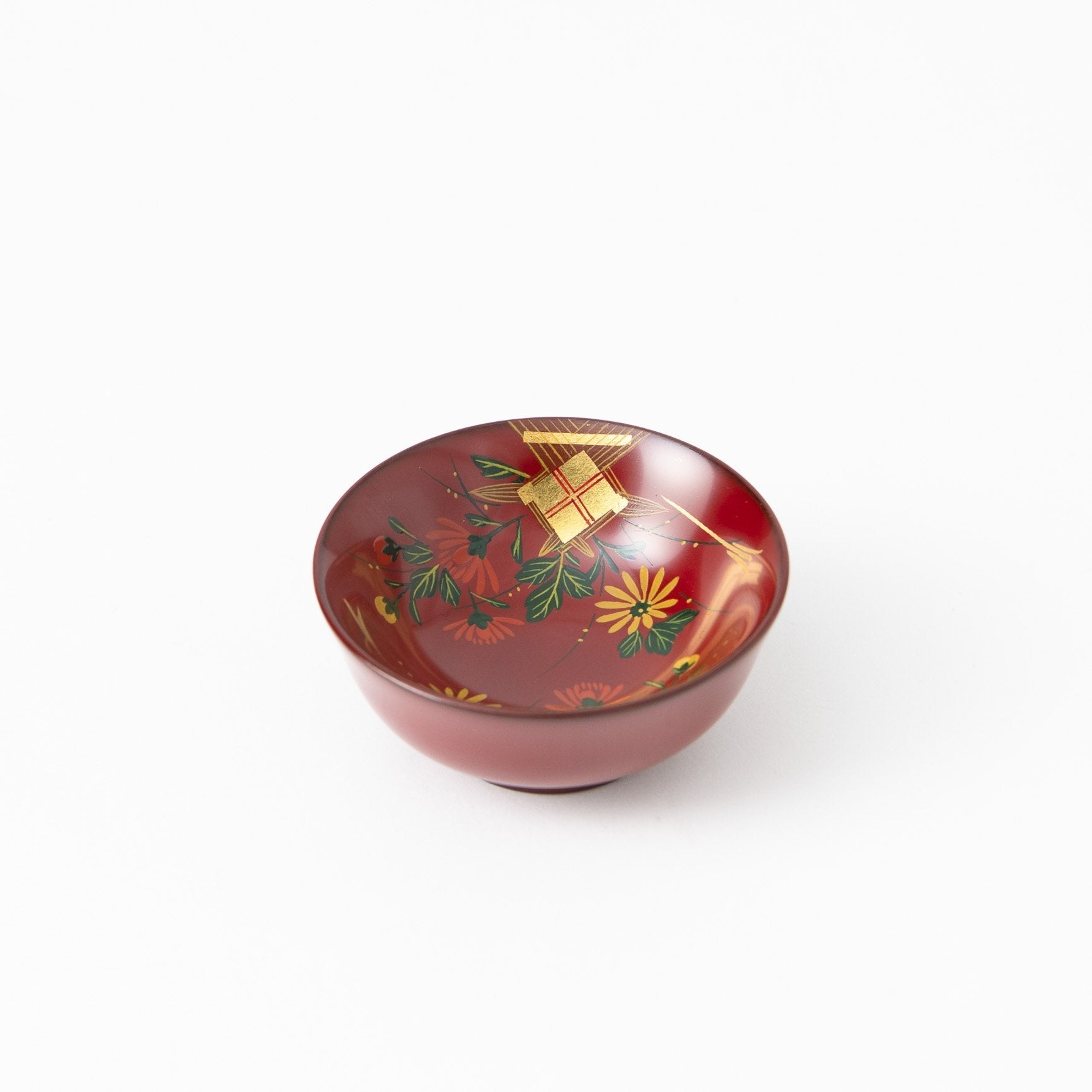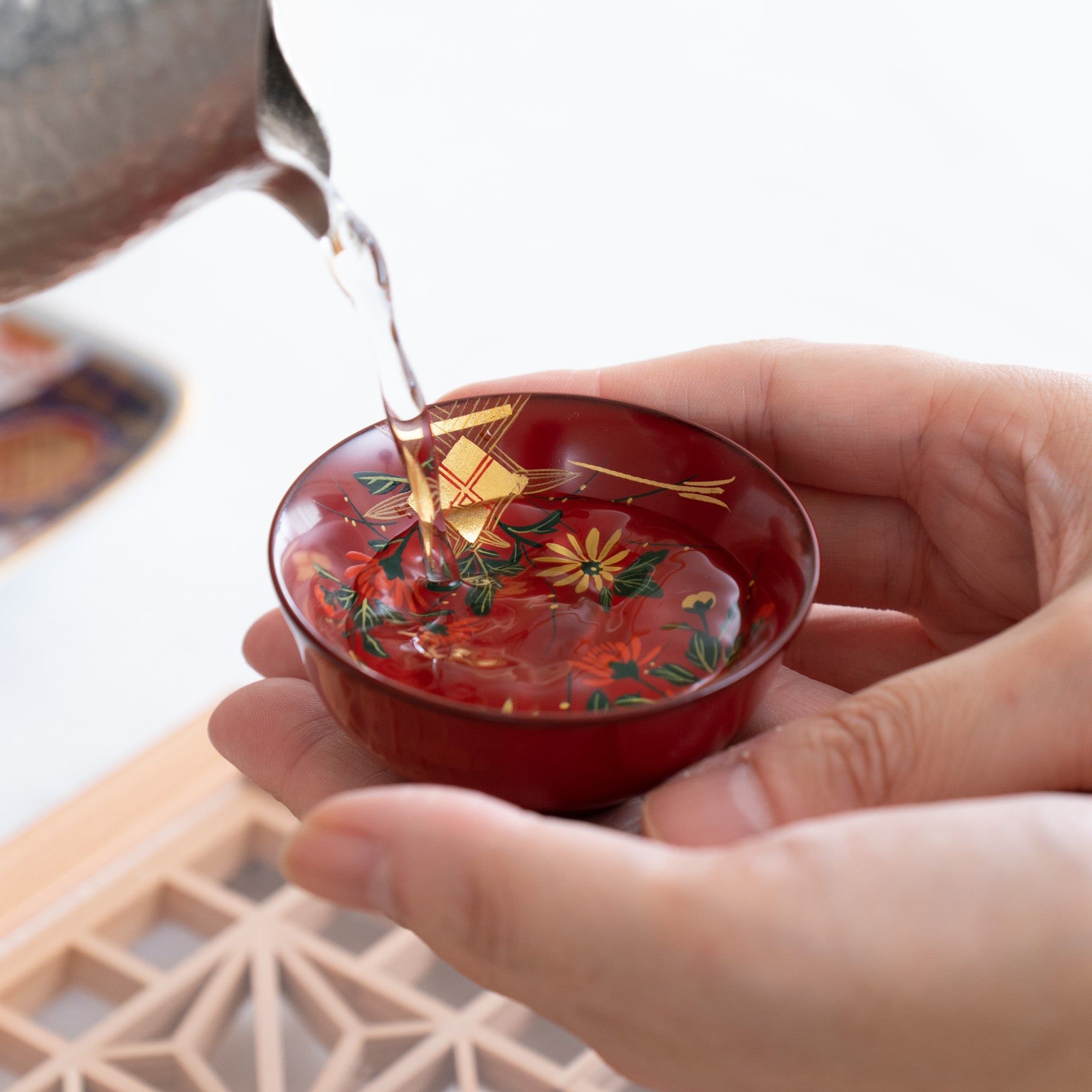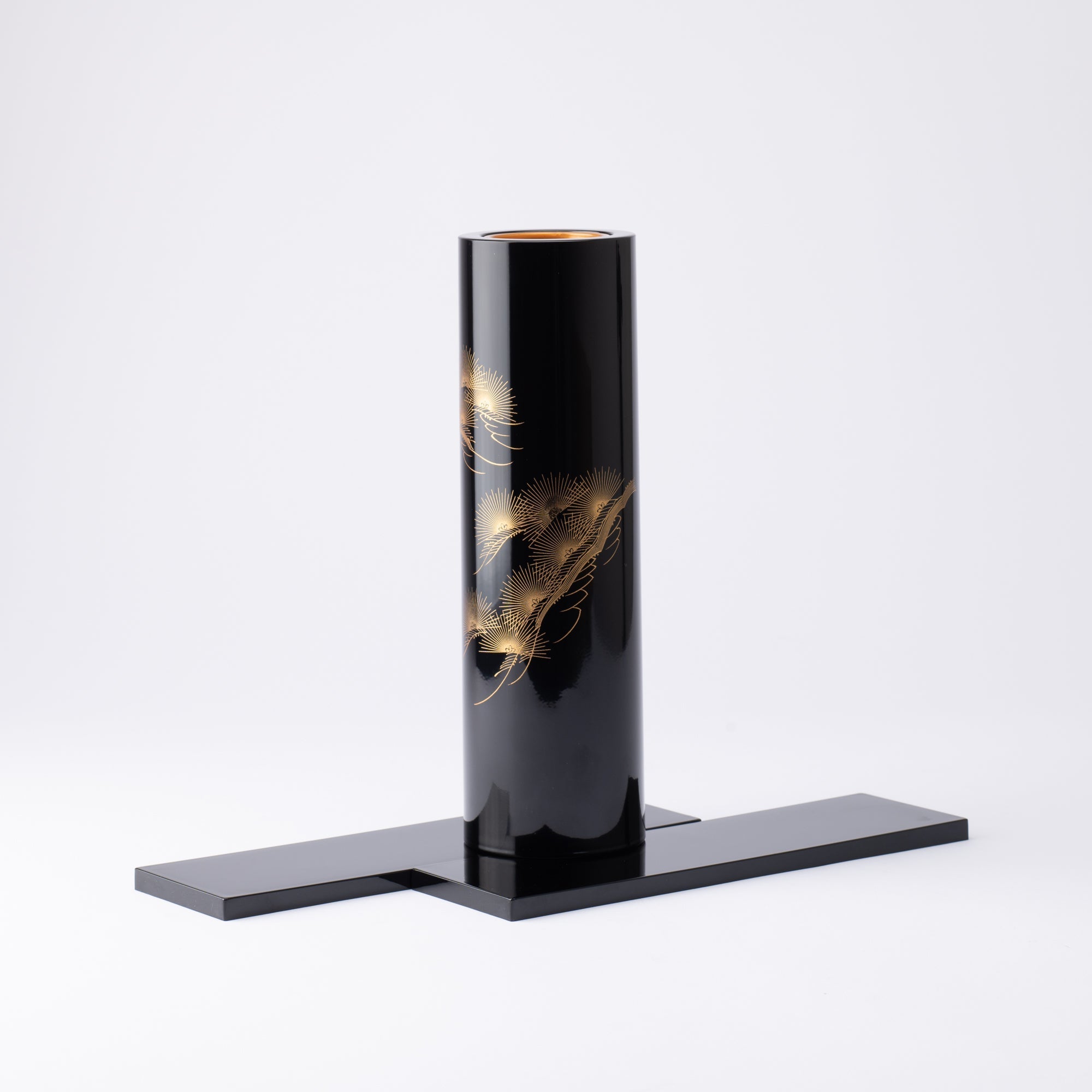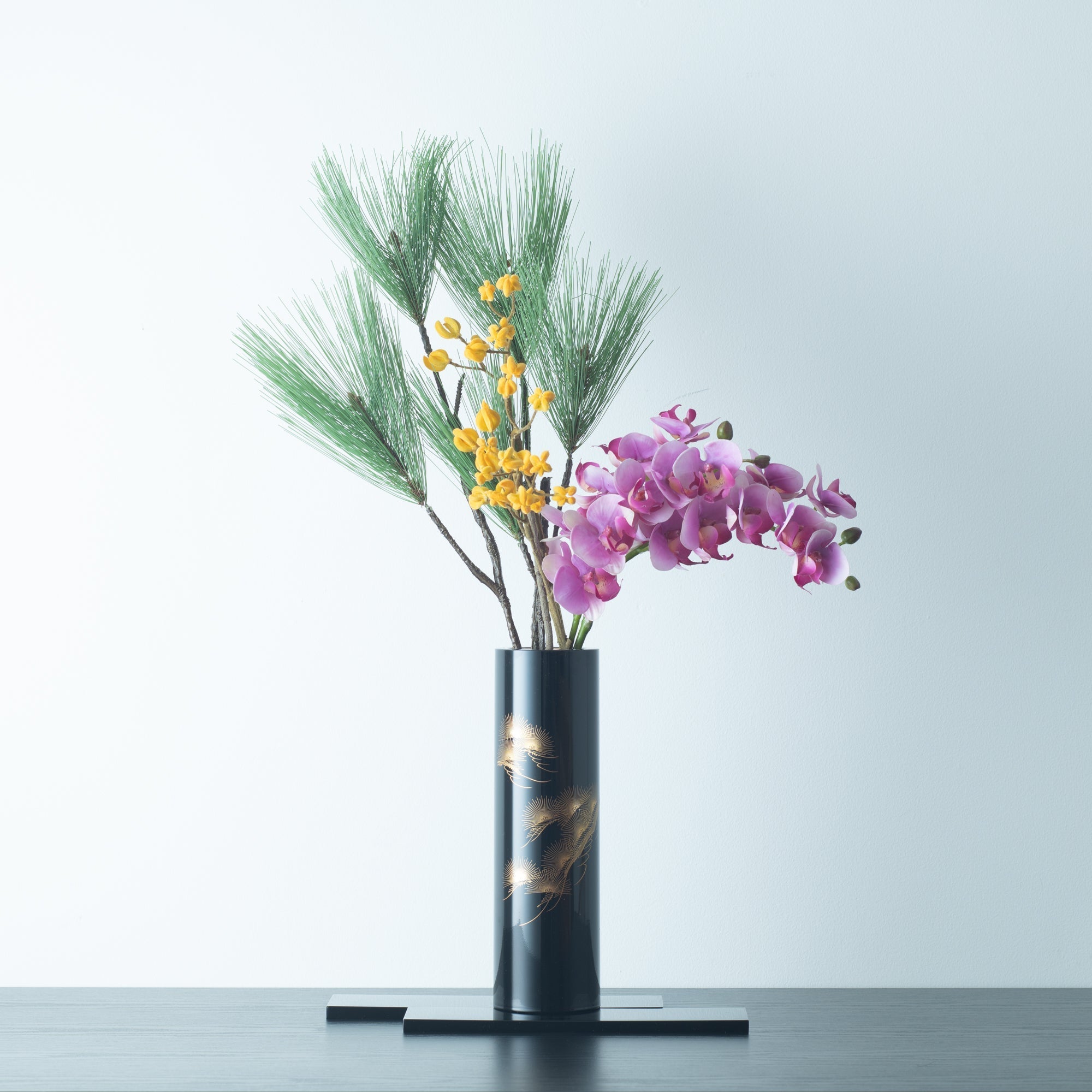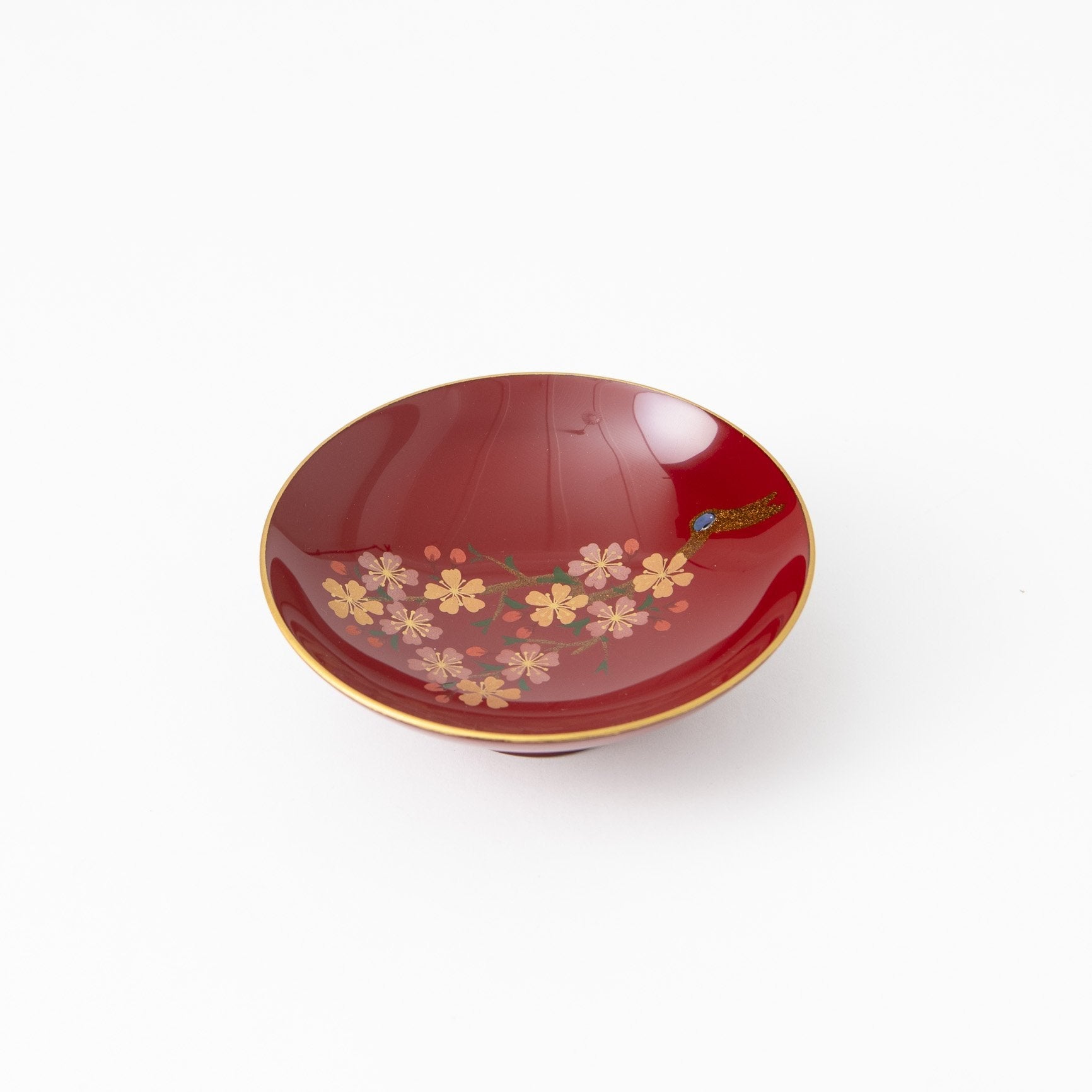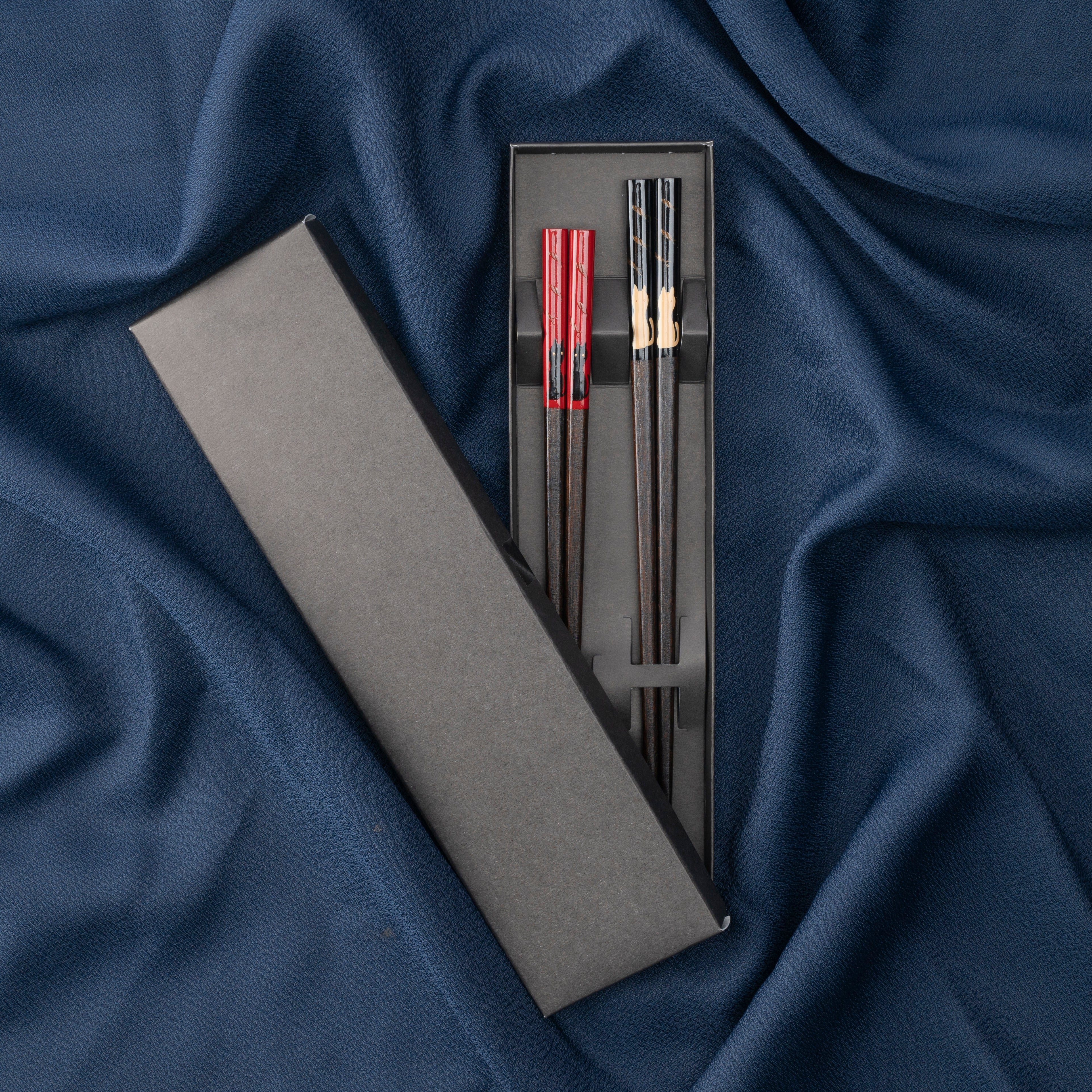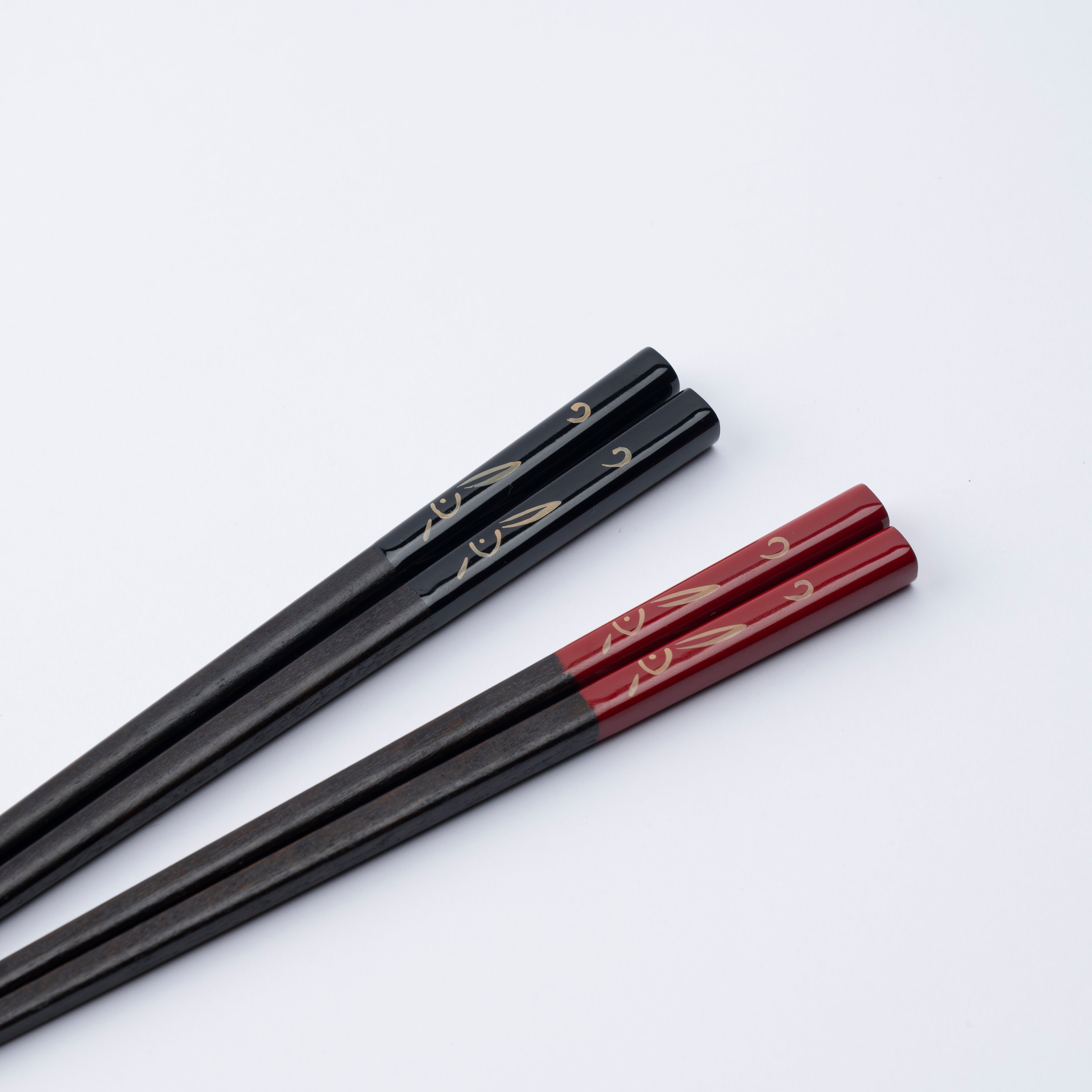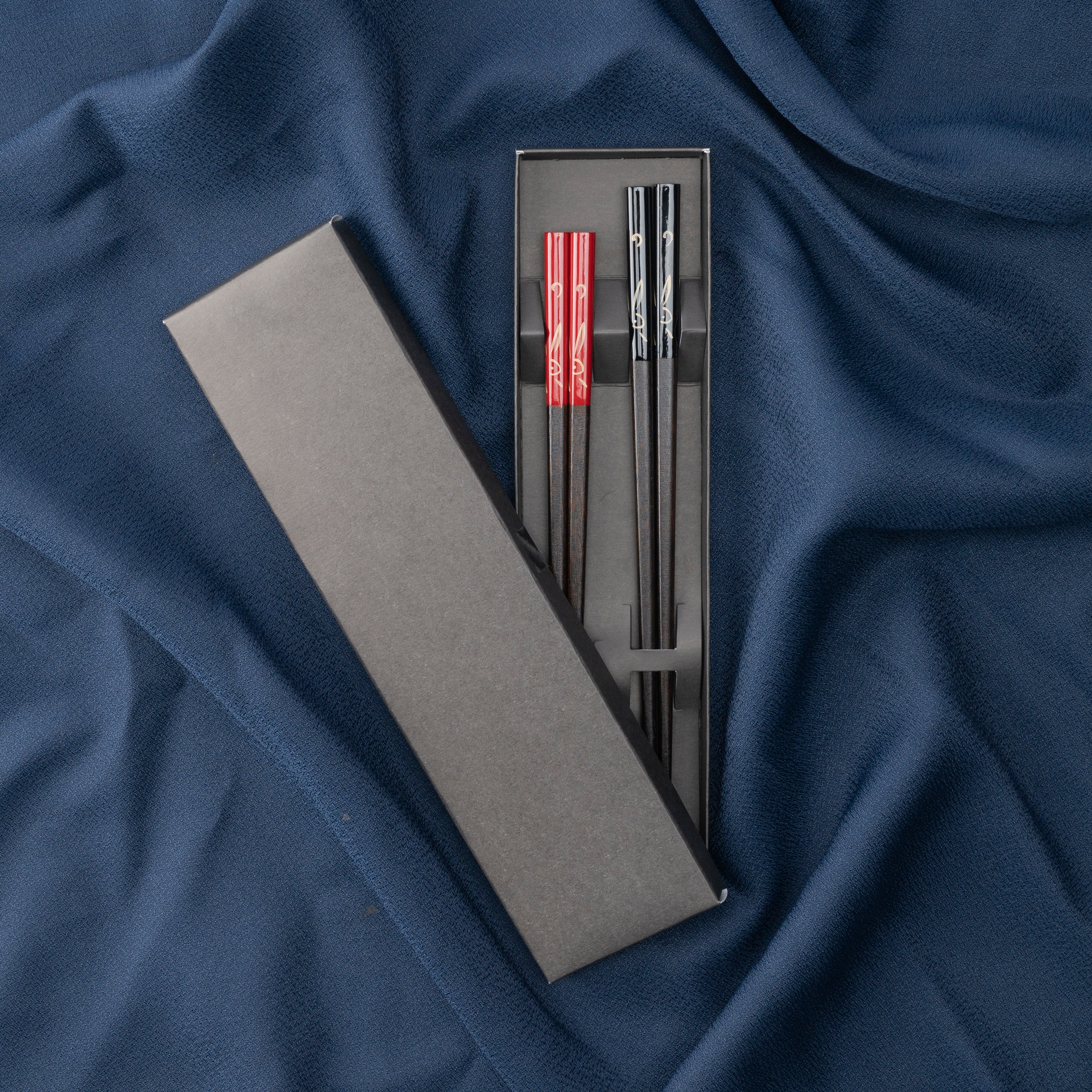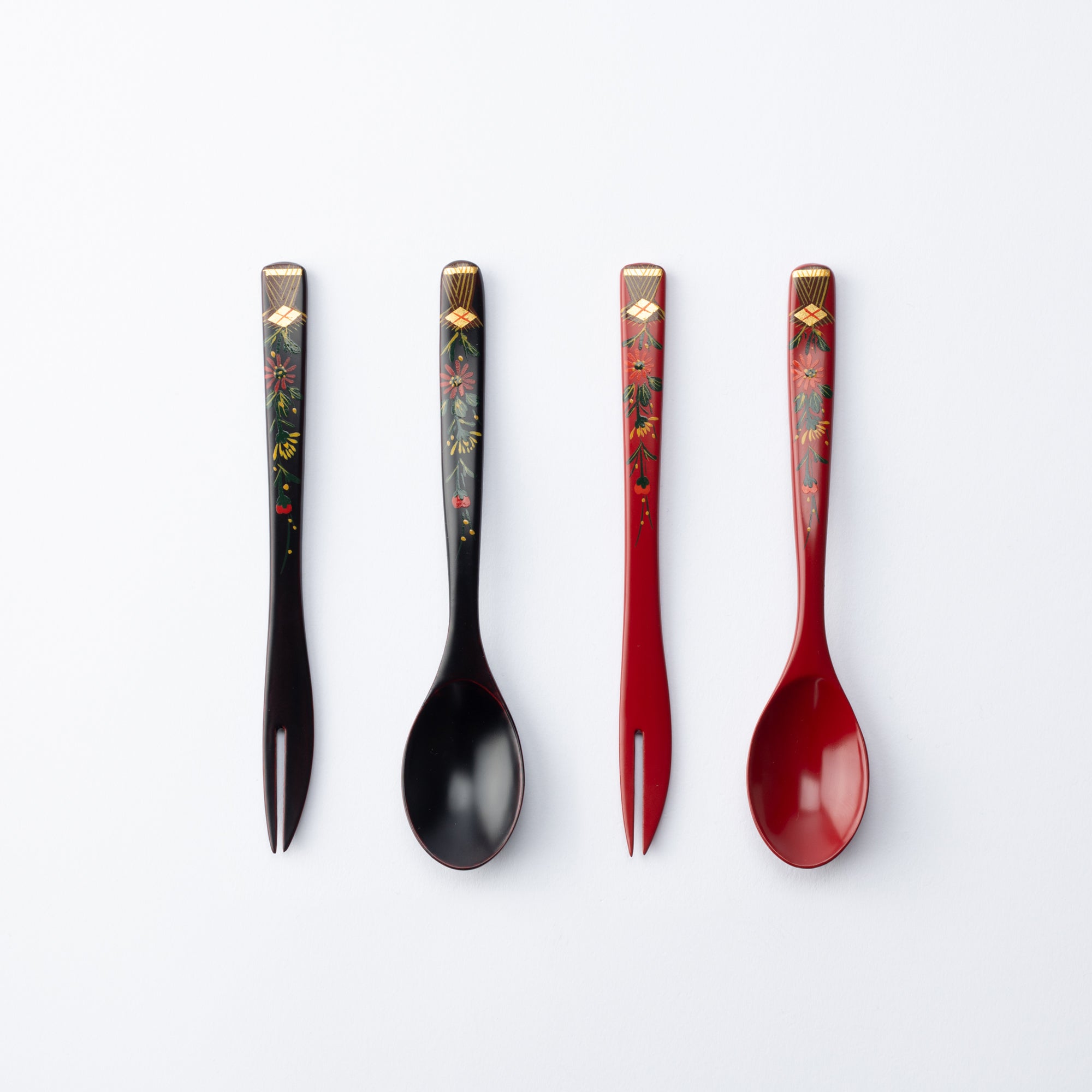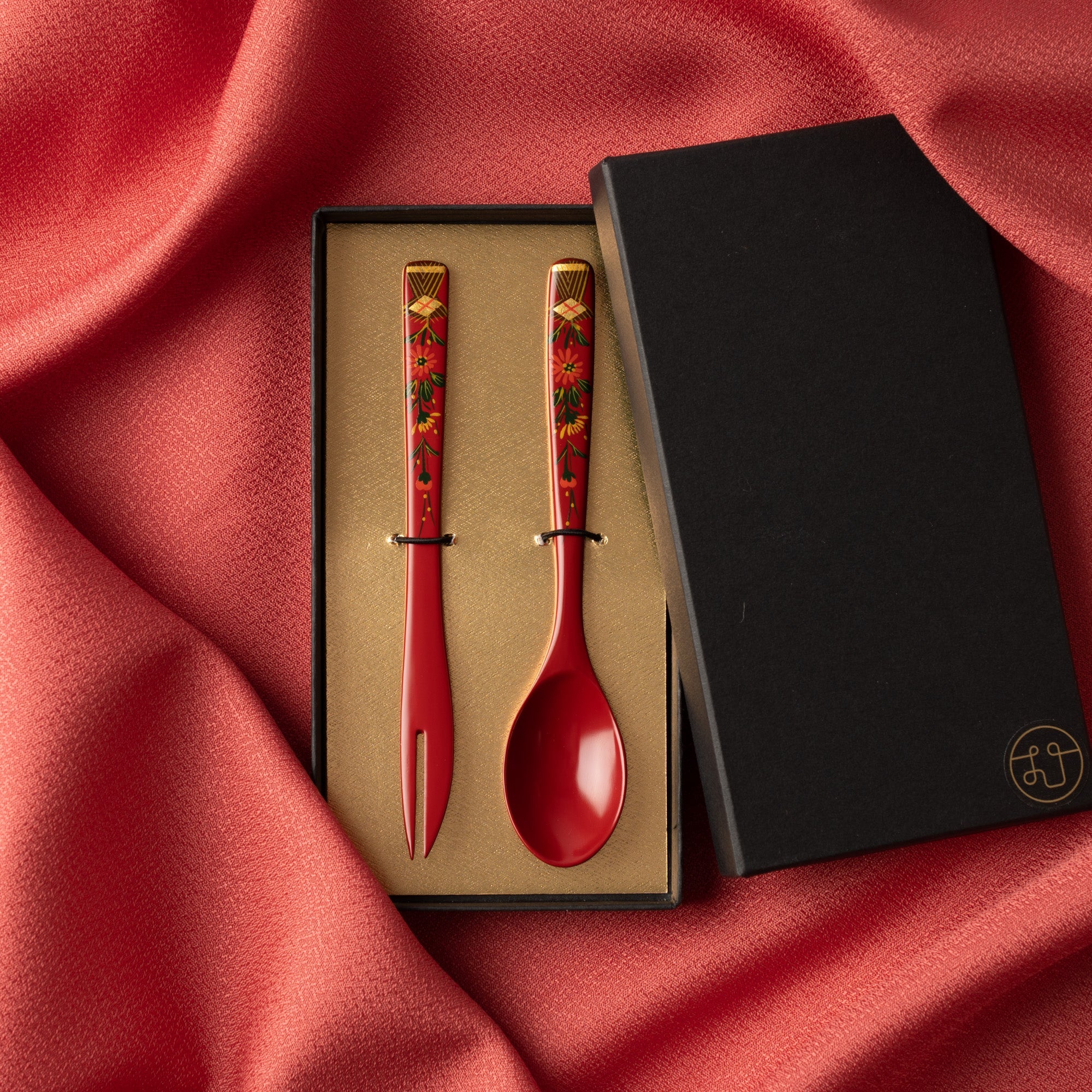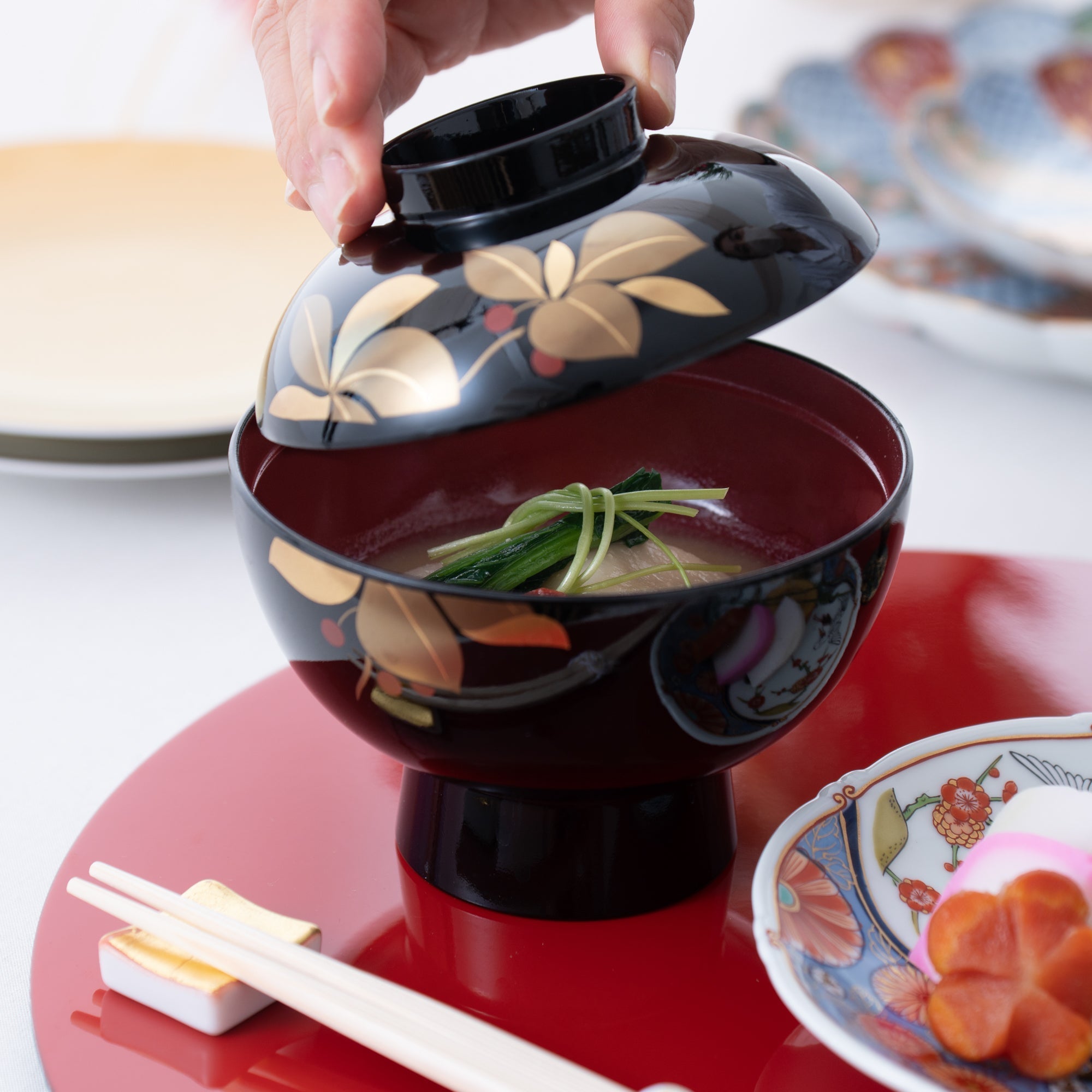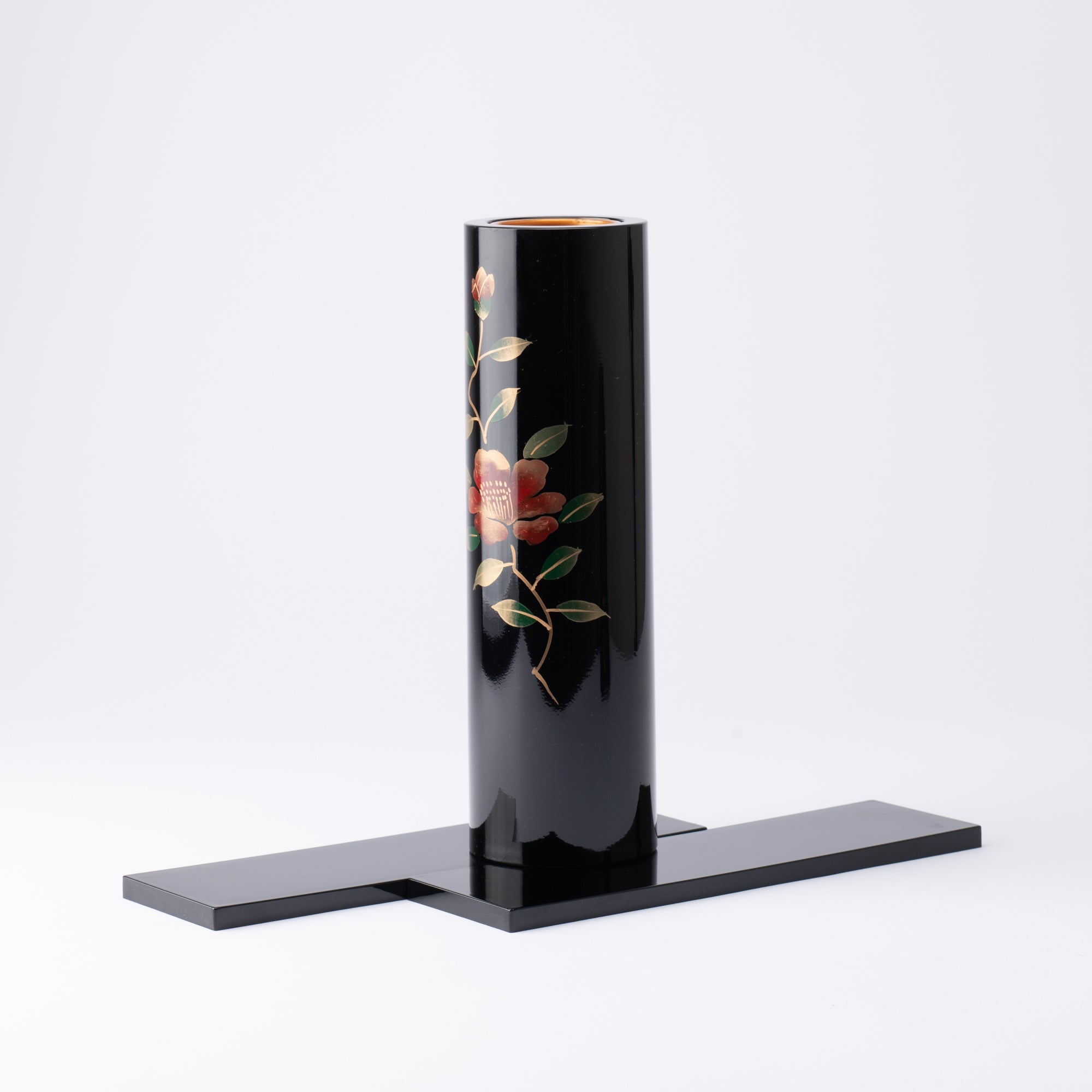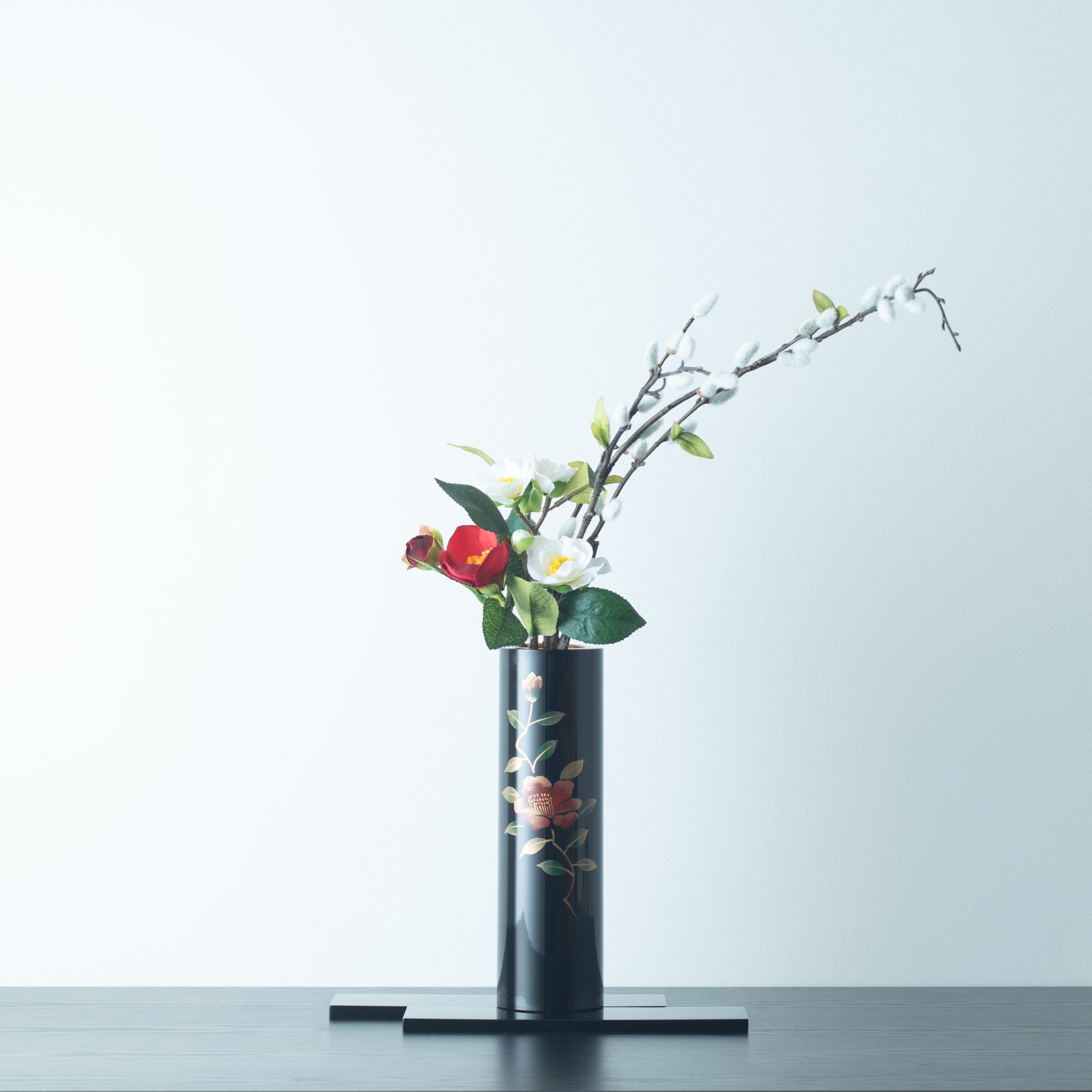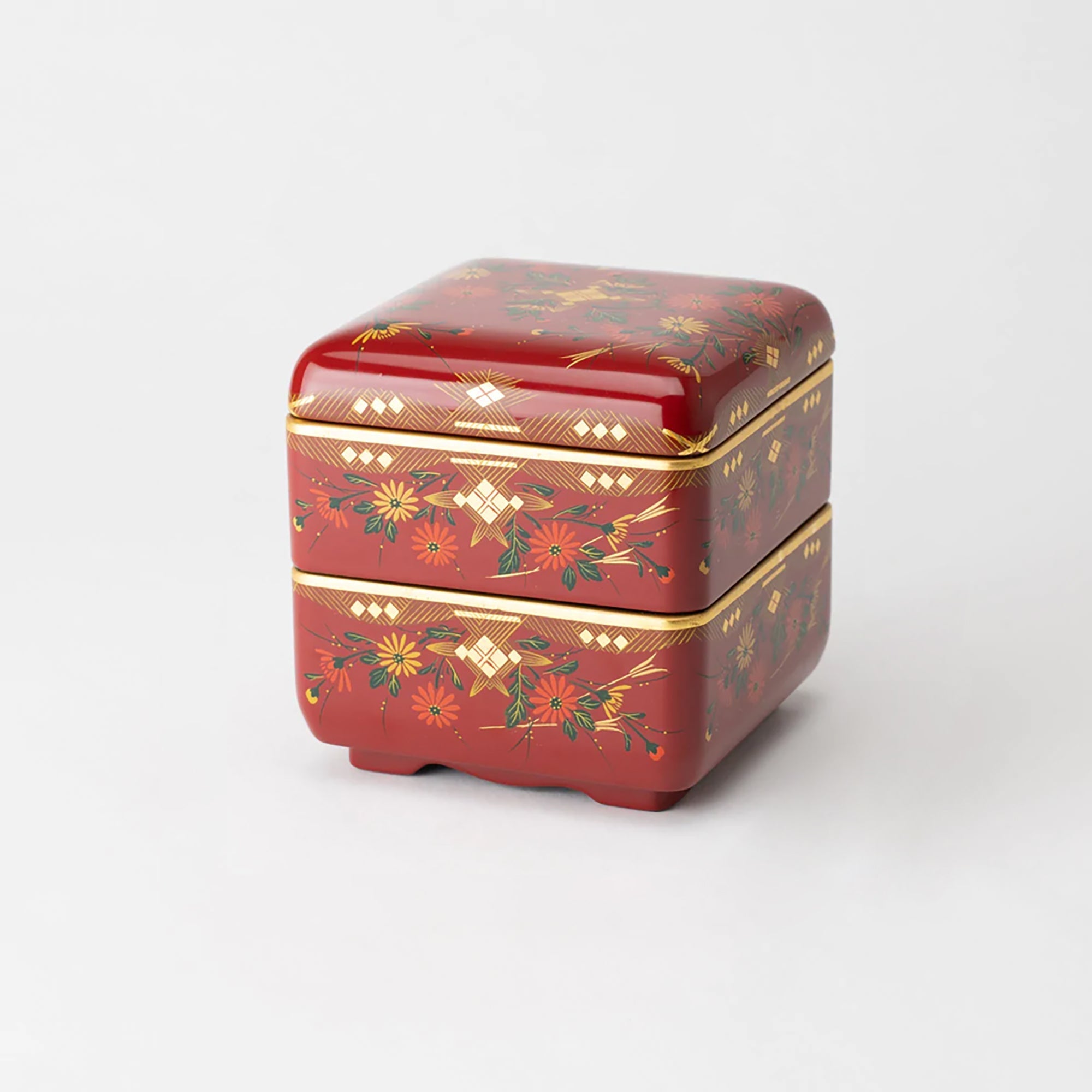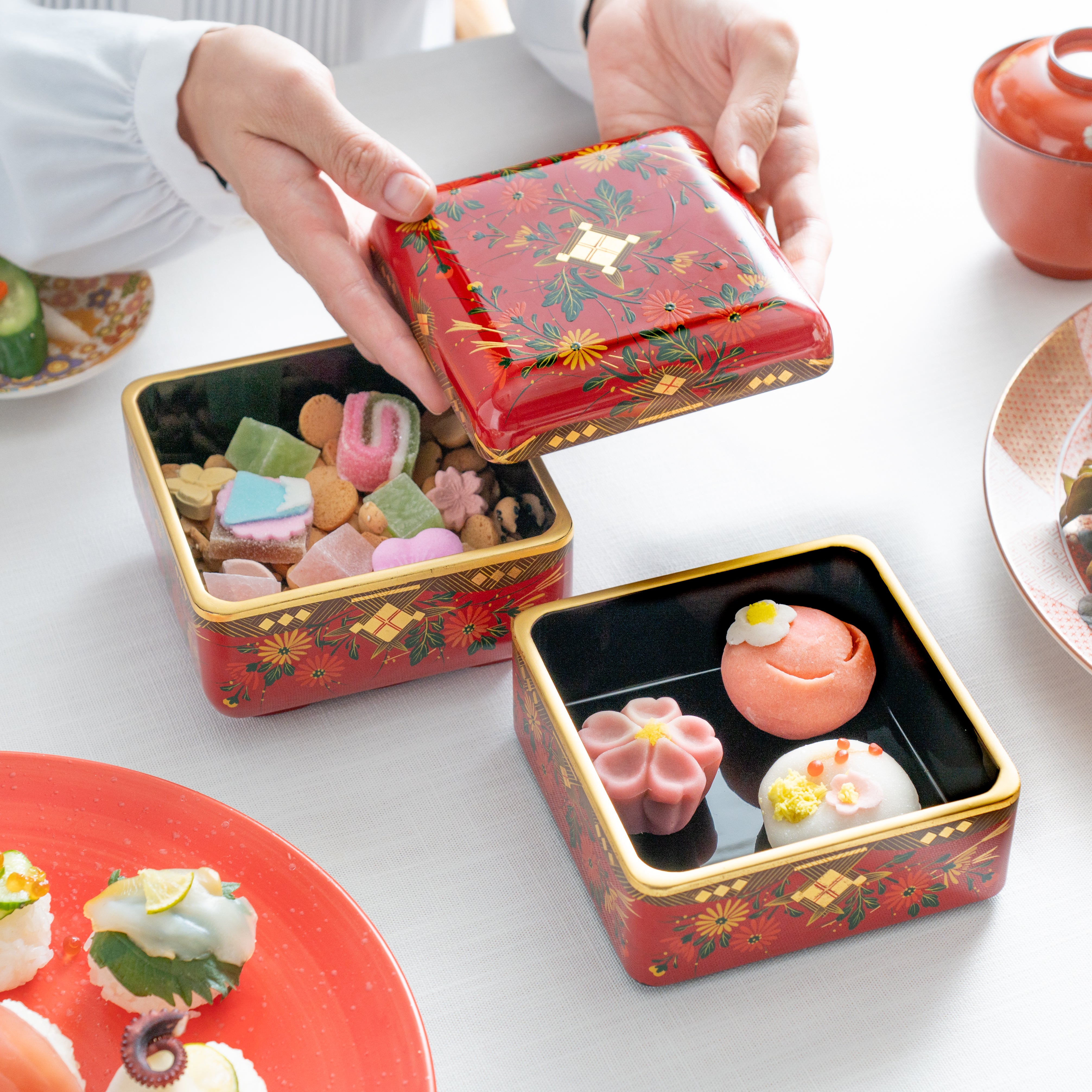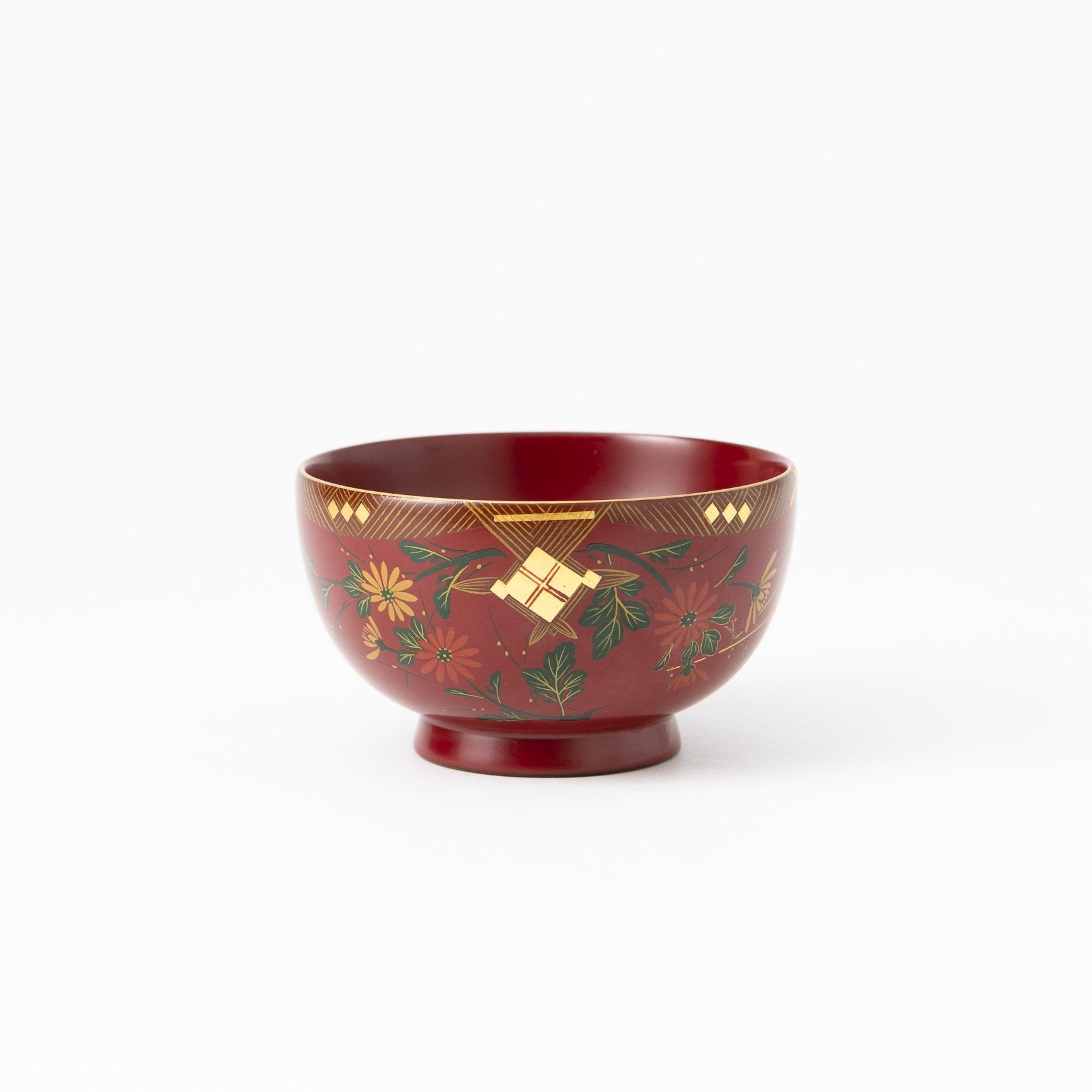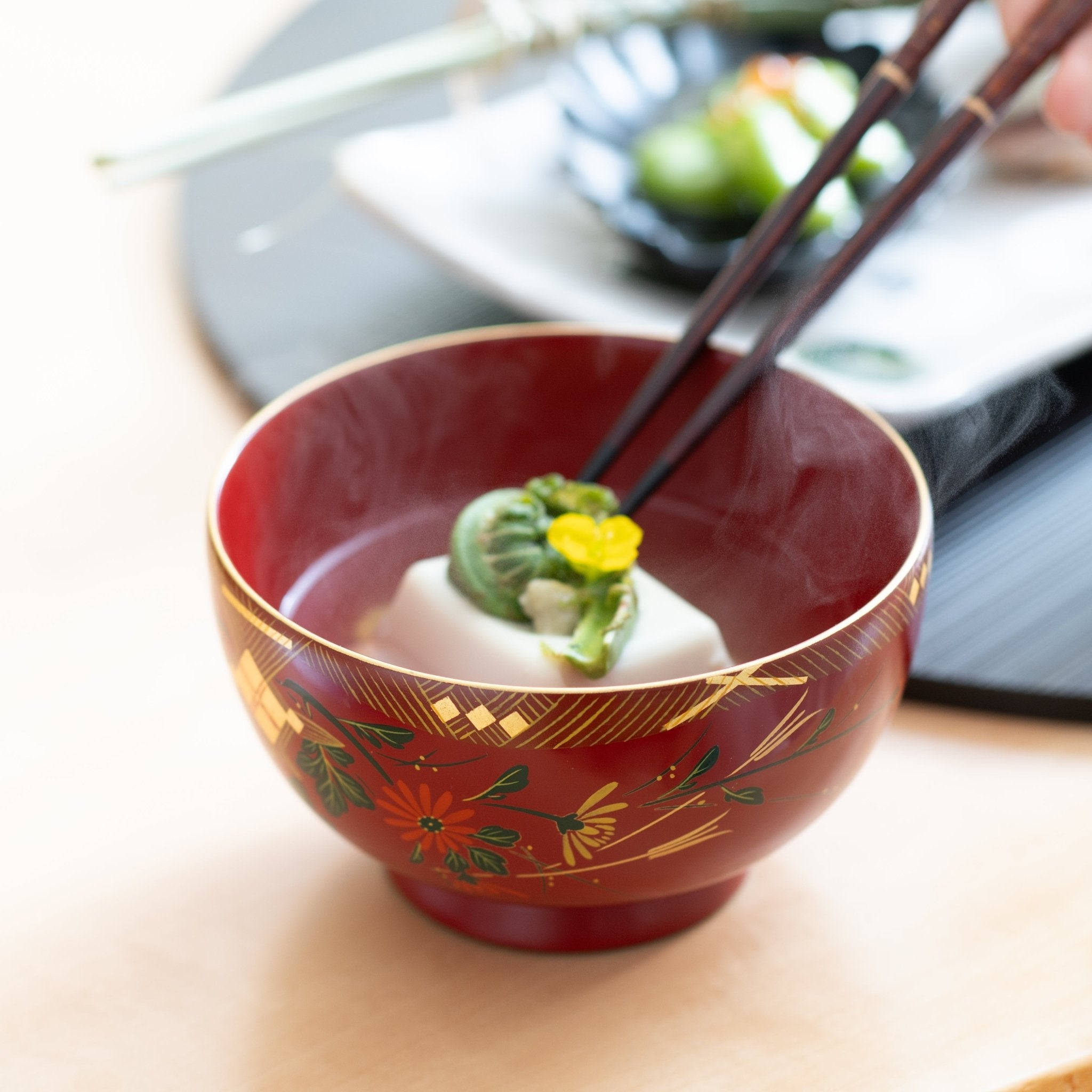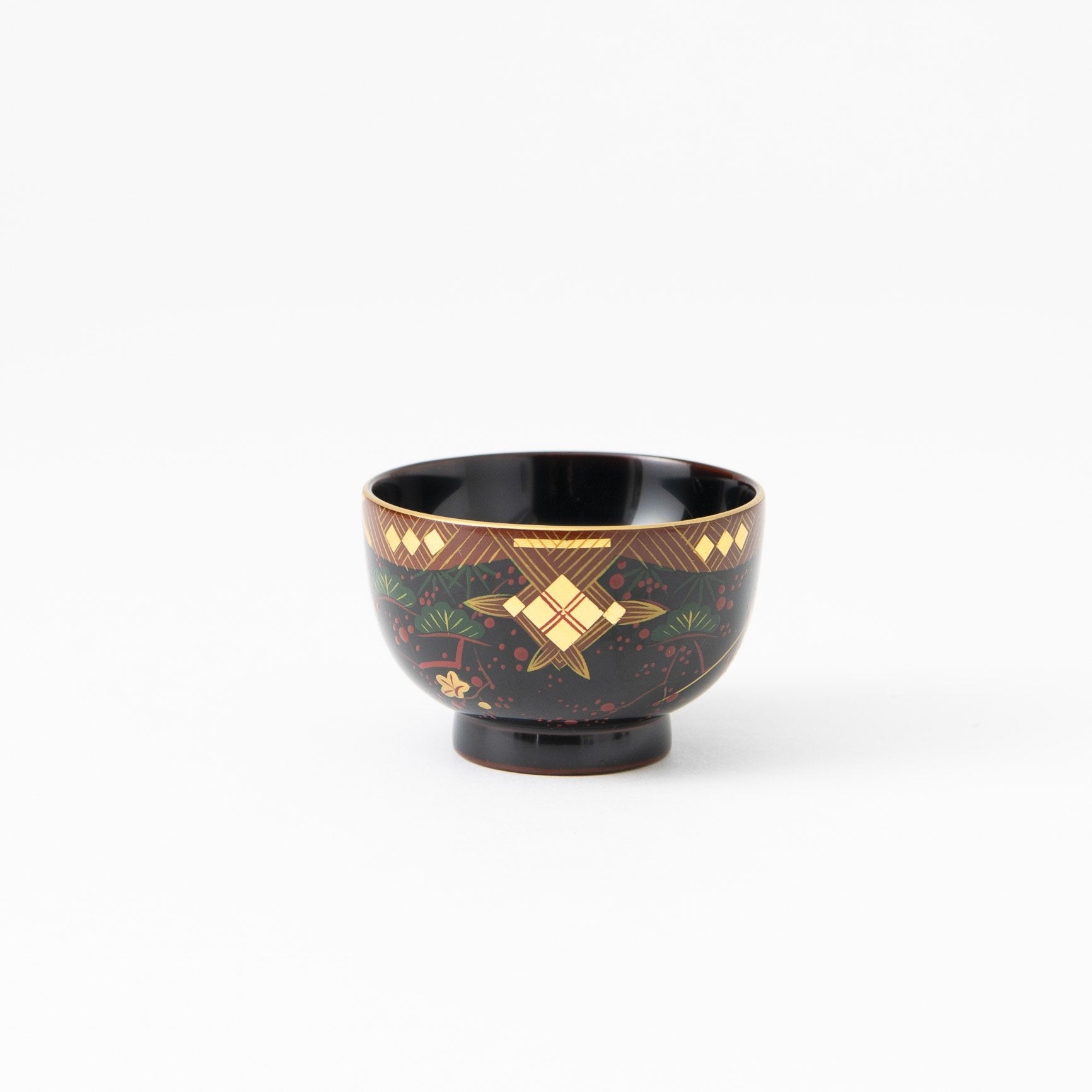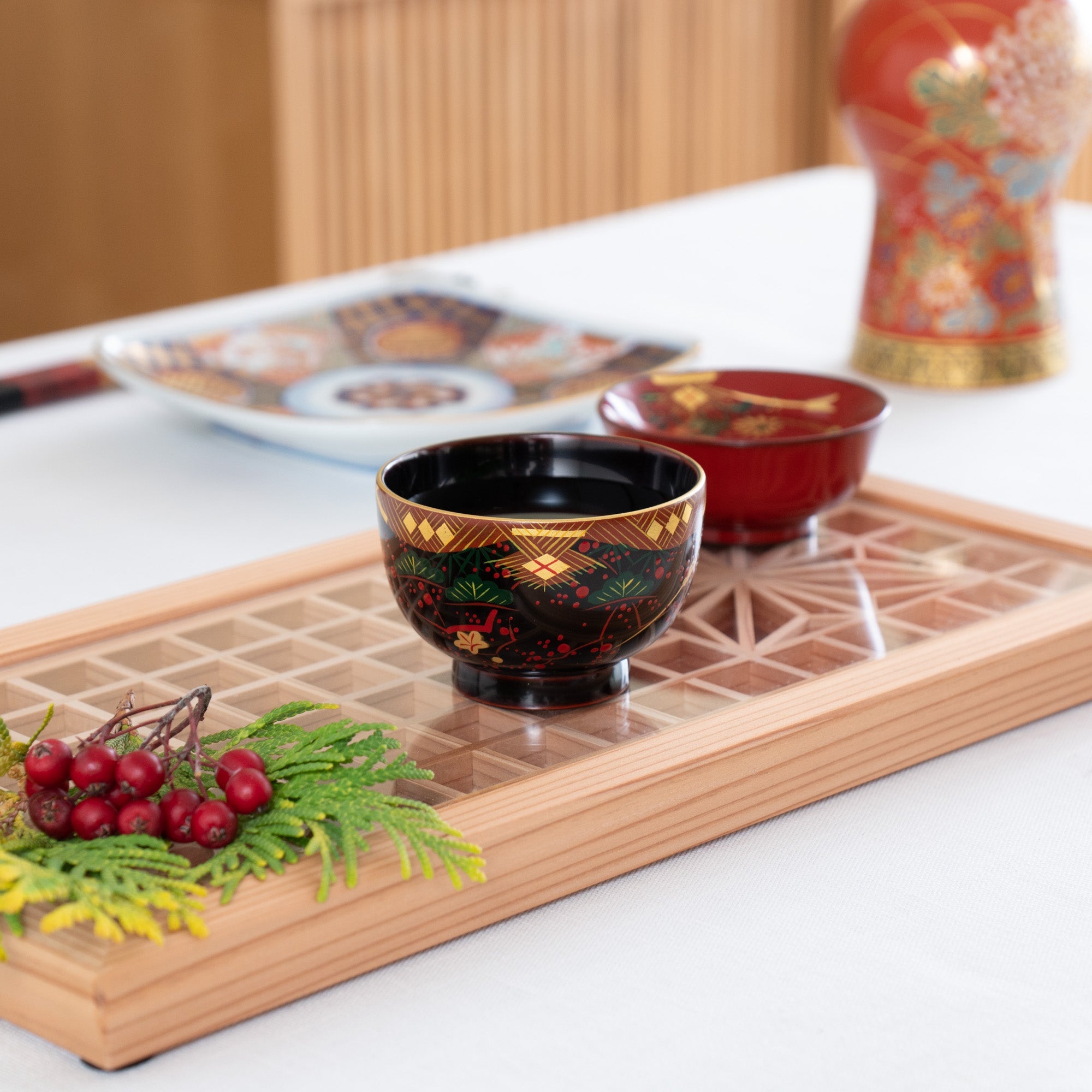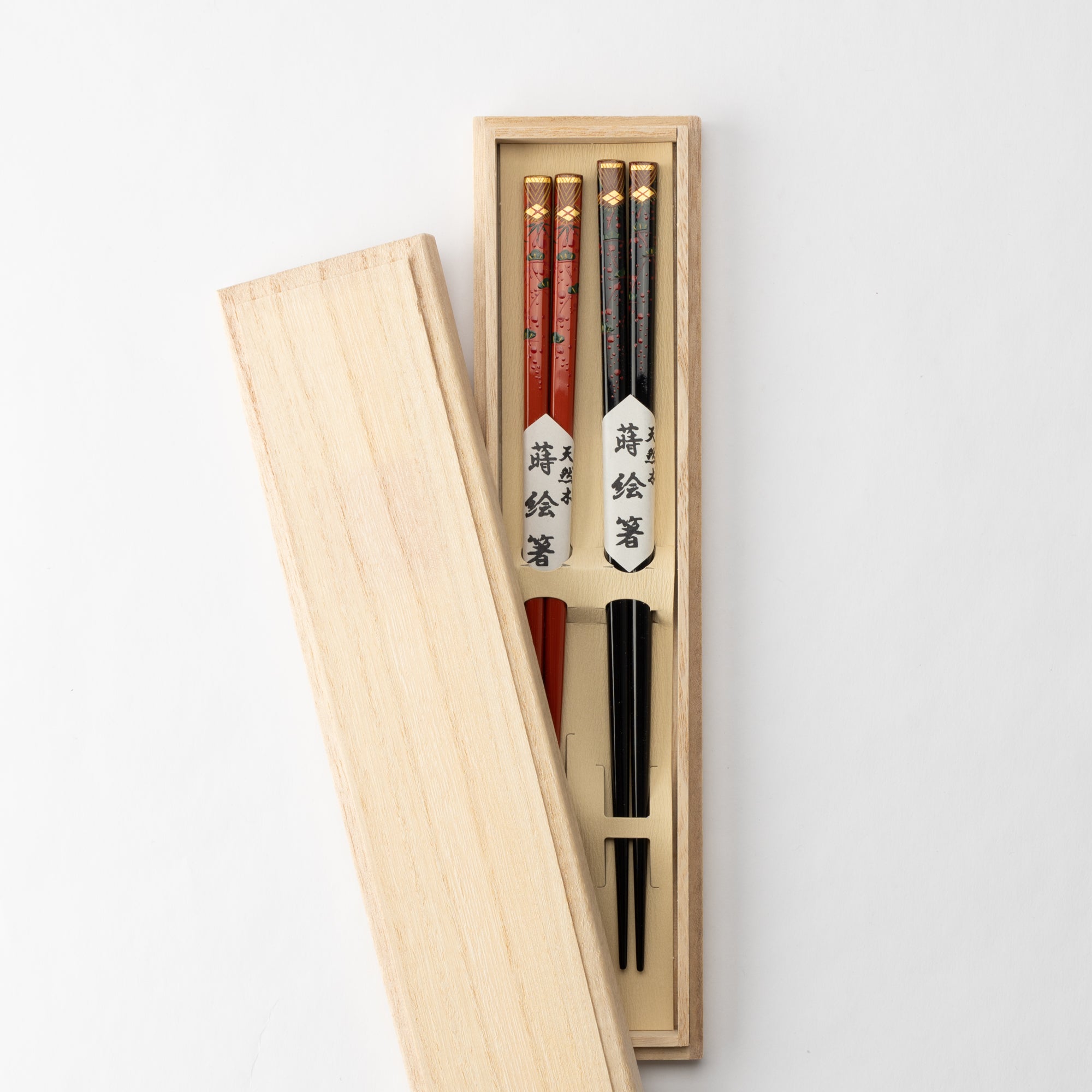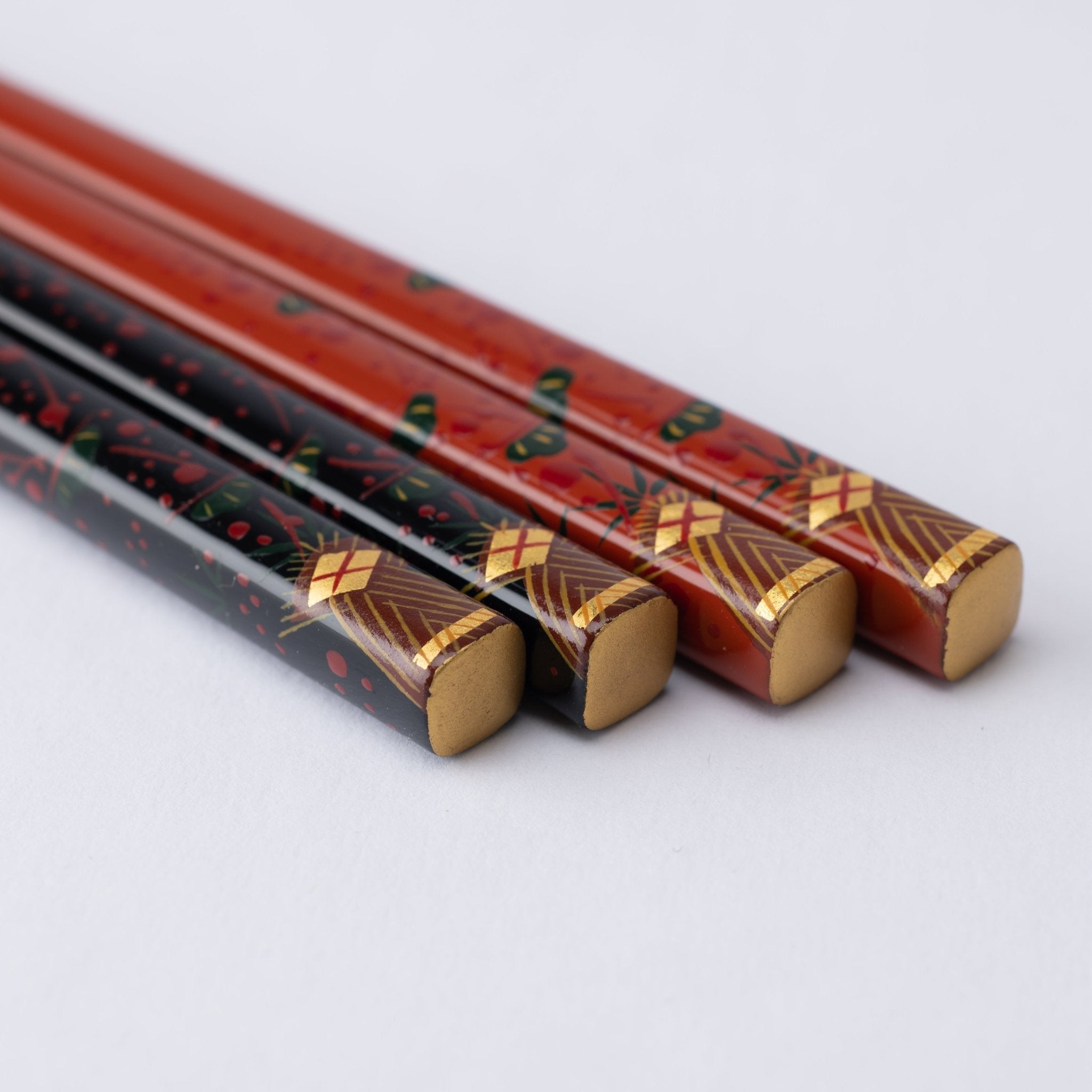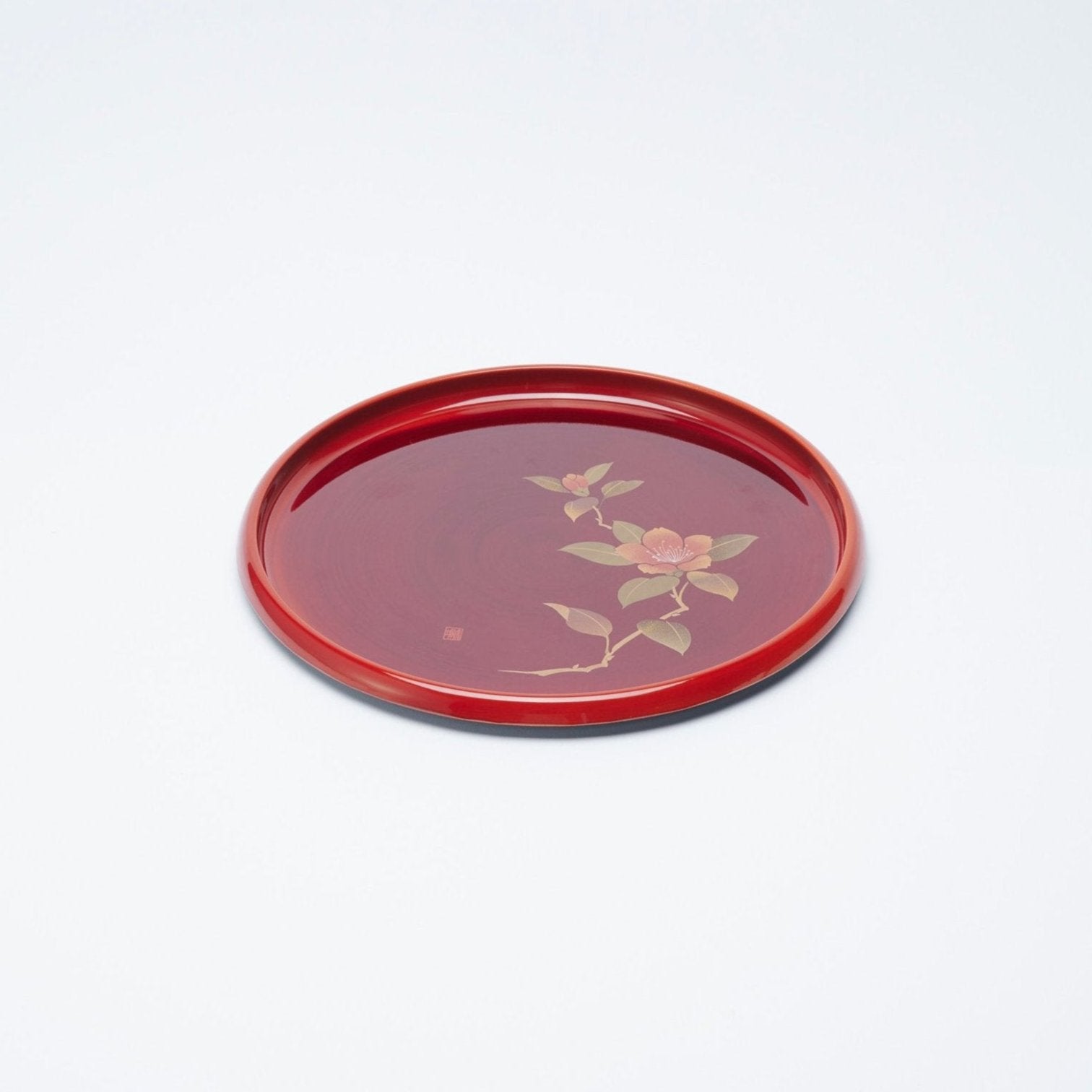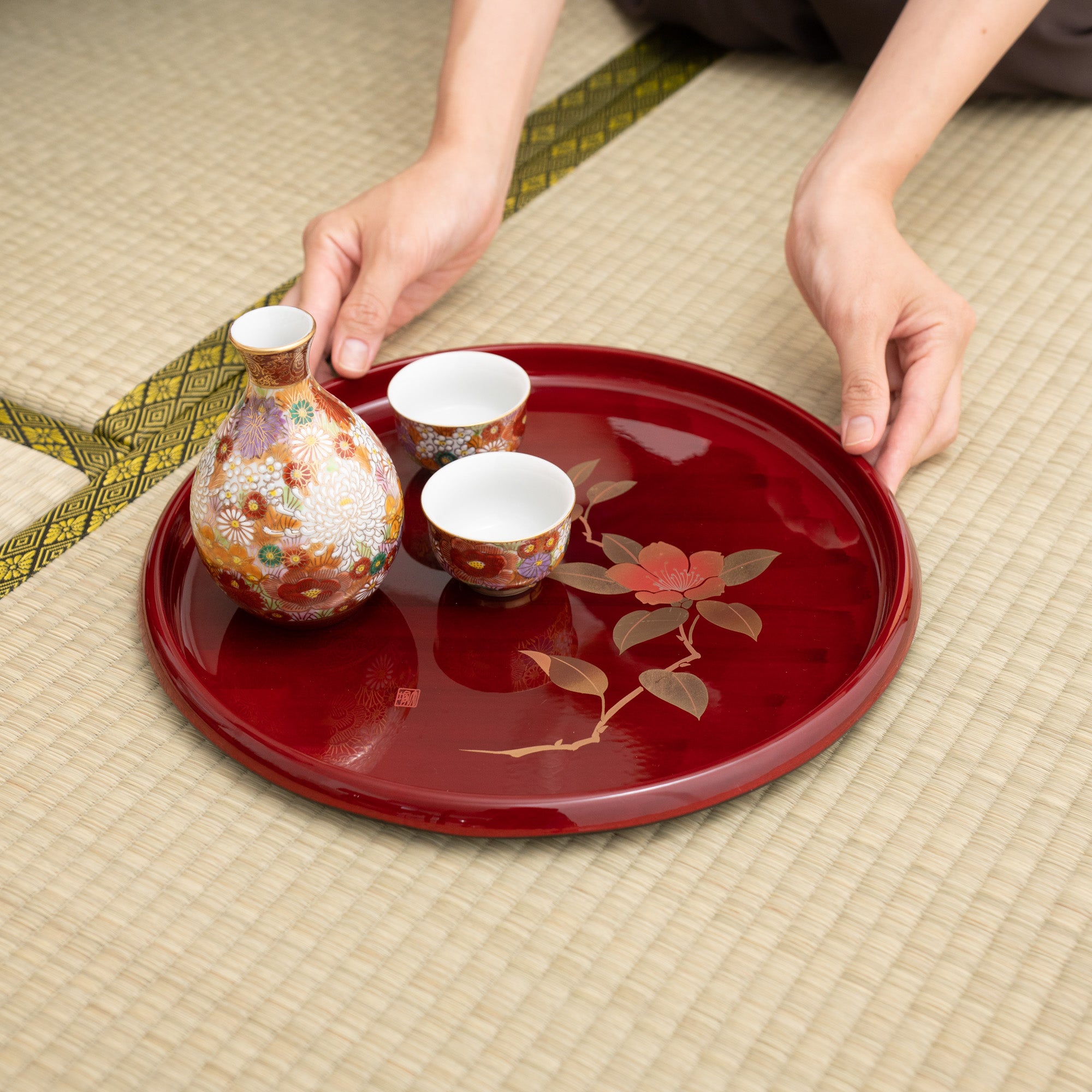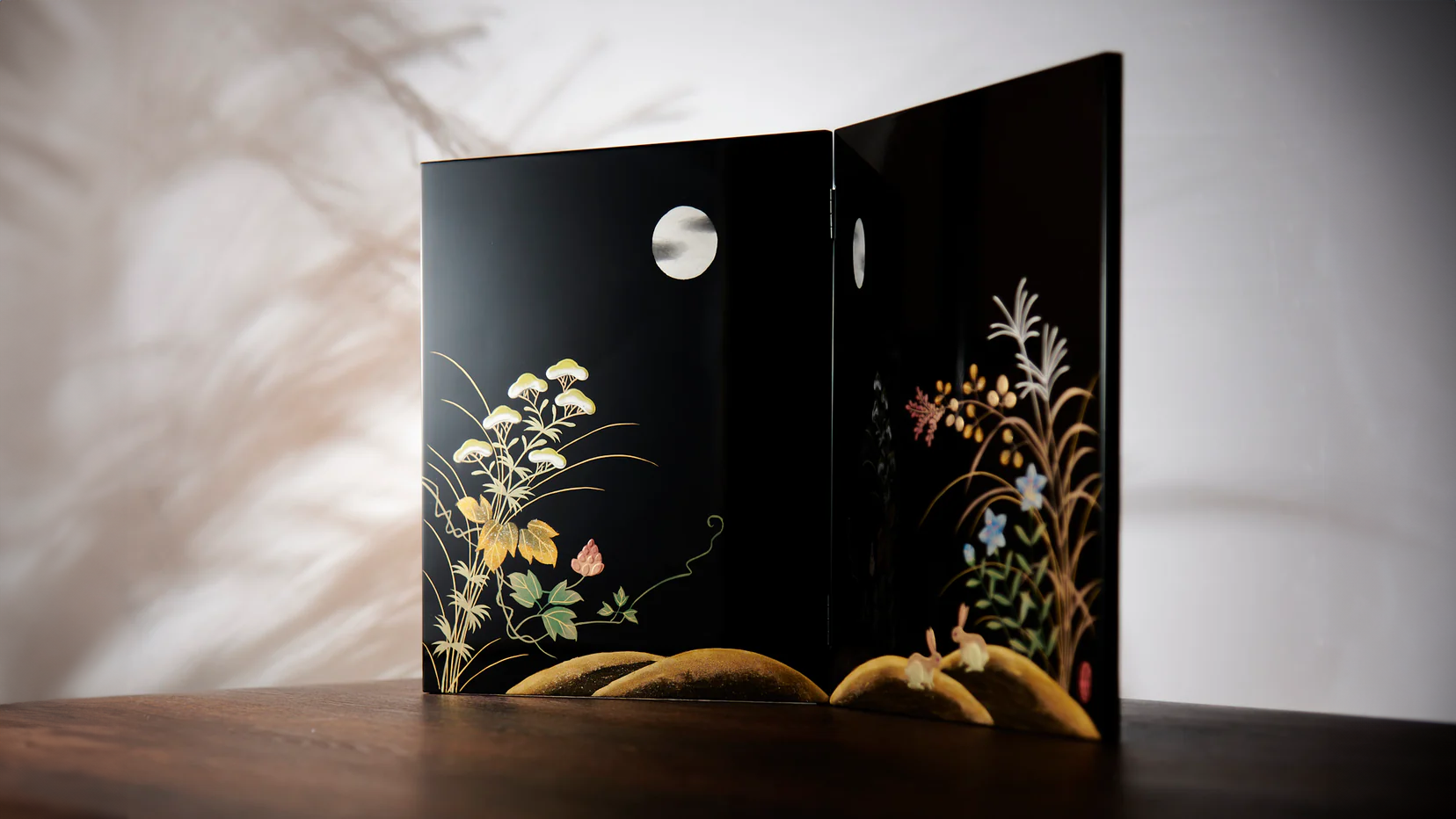
Aizu Lacquerware
Aizu lacquerware is a traditional craft originating from the Aizu region in western Fukushima. Nestled in a basin surrounded by mountain ranges, the region's humid climate provides ideal conditions for working with lacquer. Aizu lacquerware is known for its auspicious motifs and refined decorative techniques, including Aizu-e, featuring vibrant Japanese floral patterns, and maki-e, which uses gold powder to create intricate designs.
Firmly rooted in over 400 years of tradition, Aizu lacquerware continues to evolve by embracing modern techniques, sharing its timeless beauty with the world today.
The history of Aizu lacquerware dates back to the Muromachi period (1336–1573 CE), when a powerful local clan promoted the cultivation of lacquer trees in the region. In 1590, Gamo Ujisato became the lord of Aizu and invited skilled artisans—including lacquerers, woodworkers, and maki-e artists—from his native Omi Province (now Shiga Prefecture), encouraging the development of lacquerware as a local industry.
In the 18th century, decorative techniques such as maki-e were introduced from Kyoto, and Aizu lacquerware grew in popularity, eventually being exported to countries such as China and the Netherlands. Although the industry suffered major damage during the Boshin War in 1868, it recovered in the late 19th century and reestablished itself as one of Japan’s leading lacquerware production centers.
With a history spanning over 400 years, Aizu lacquerware continues to be handed down through generations and remains a symbol of enduring craftsmanship.
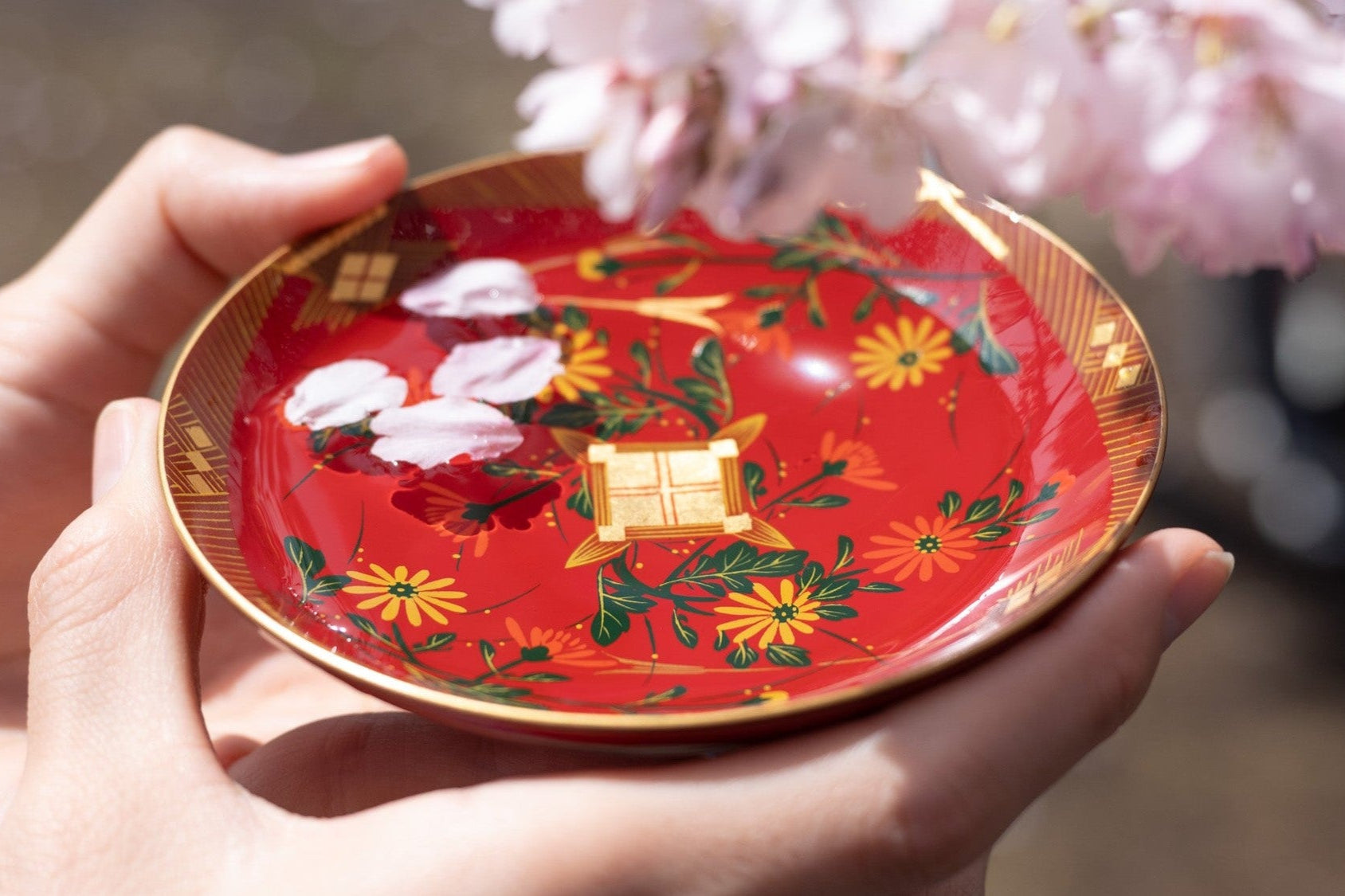
Production Process

Making the Wooden Base
Traditional lacquerware begins with the careful preparation of a wooden base, followed by the application of lacquer and decorative techniques. The trees used as raw materials are cultivated for decades or even centuries. After being felled, the timber is dried for several more years, sometimes decades, to reach optimal quality. Skilled woodworkers determine the ideal timing to use the wood, bringing out its best qualities in each piece they create.
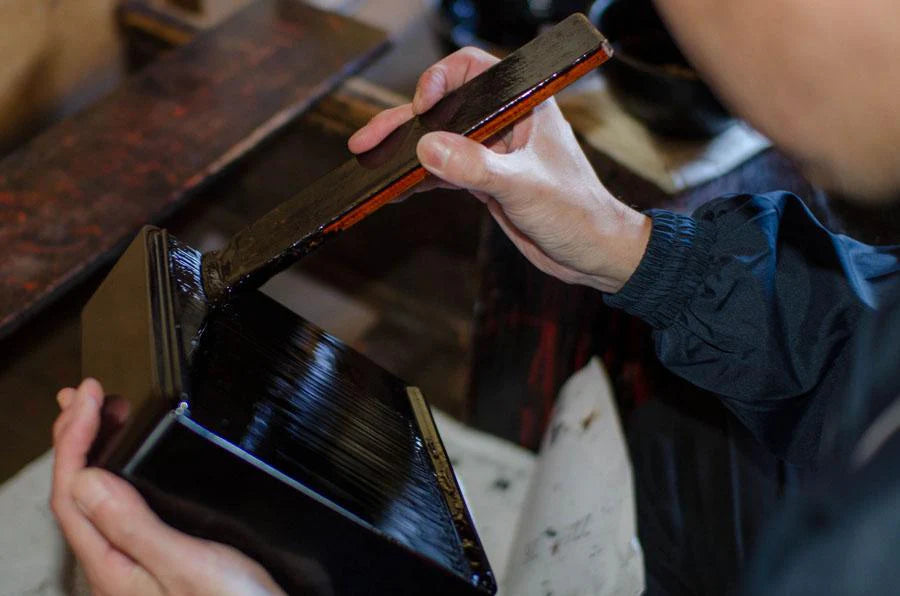
Coating
The role of the lacquerer is to apply layers of lacquer to the shaped wooden base, giving it a smooth, refined texture as a vessel while also enhancing its durability. Lacquer hardens through a chemical reaction in which urushiol, one of its main components, binds with moisture in the air. By carefully refining the lacquer and applying it in multiple layers—from the base coat to the final finish—a warm and distinctive texture is created.
This process requires a deep understanding of the properties of lacquer. Because it is highly sensitive to dust and airborne particles, the humidity must be meticulously controlled throughout. As a result, the workspace is kept in strict isolation, and even family members are rarely allowed to enter during the coating process.
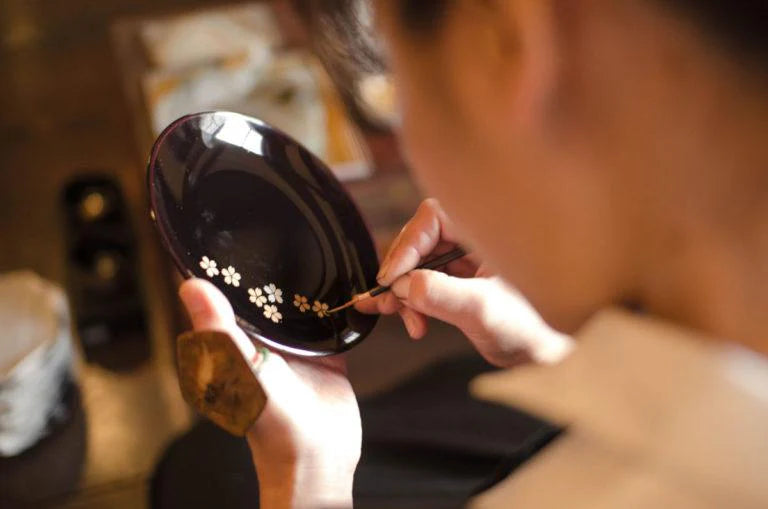
Maki-e Decoration
In this traditional decorative technique, a pattern or image is drawn onto the lacquered surface with a fine brush. While the lacquer is still wet, gold or silver powder is gently sprinkled over the design. Once dry, the pattern is revealed in shimmering detail. Maki-e takes advantage of lacquer’s natural adhesiveness, allowing even the finest lines to be rendered with precision and grace. A final thin layer of lacquer is then applied and polished, completing the exquisite maki-e decoration.
Makers
Related posts
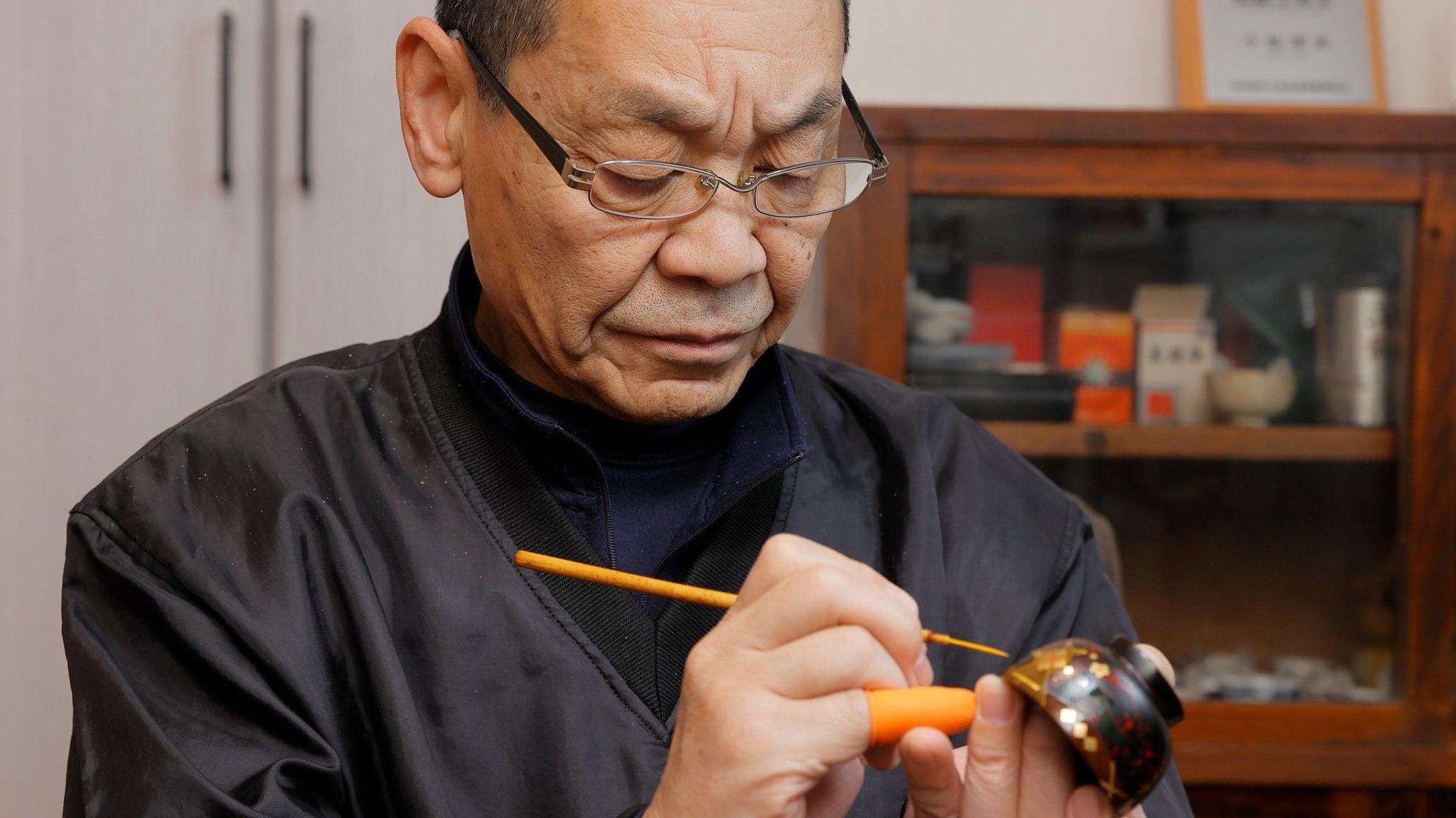
Mastering Tradition and Innovation: Art of Aizu Lacquerware
An exclusive interview with Aizu lacquerware master, Komatsu Shigeo, discussing the history, the process, and his journey.
Read moreFilters



